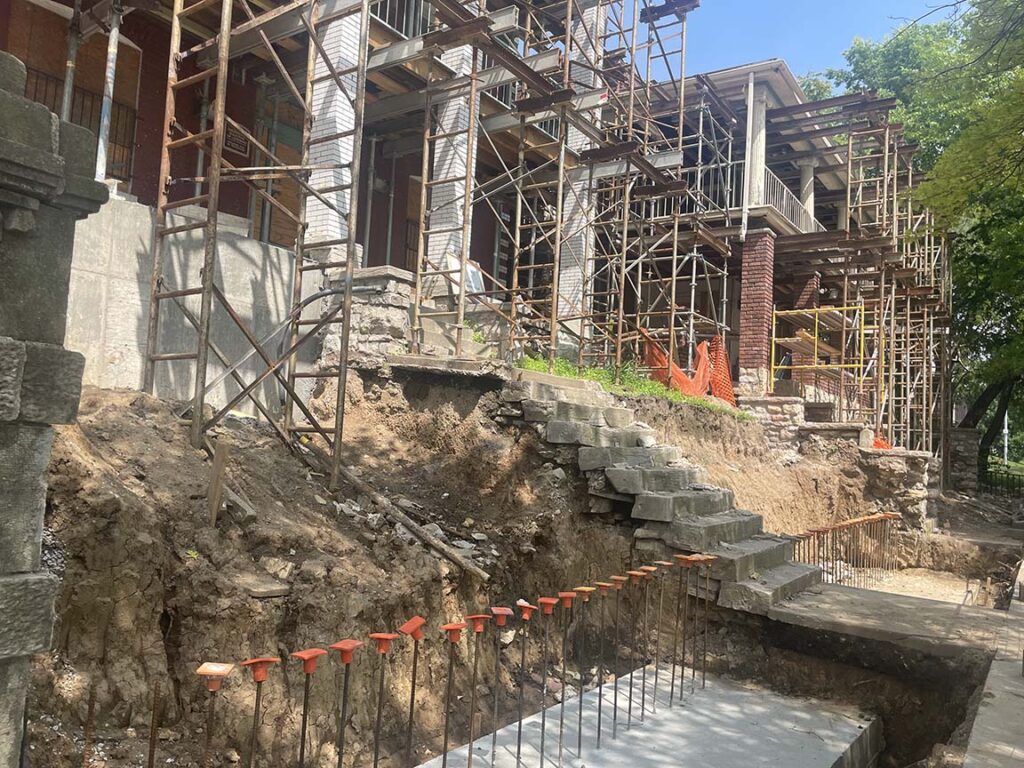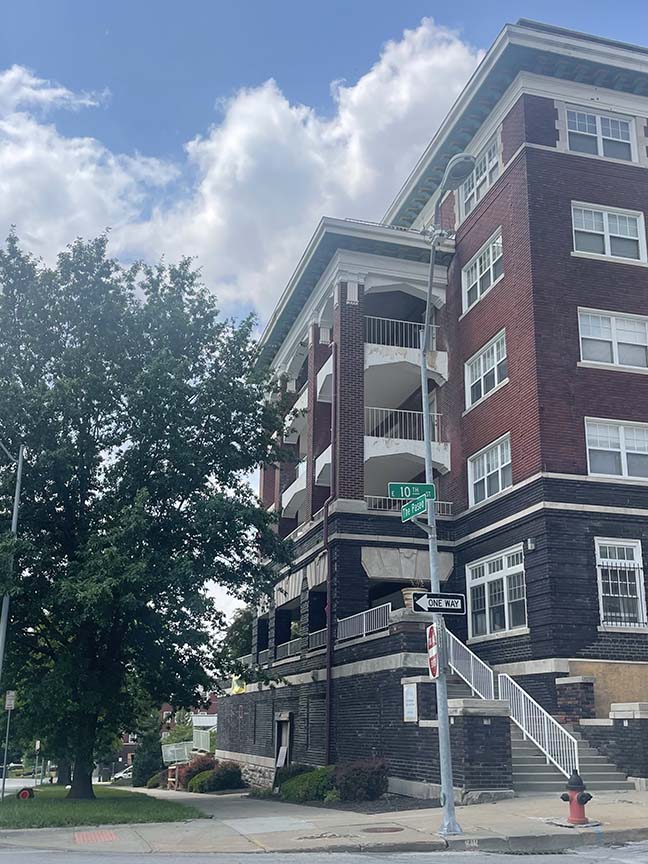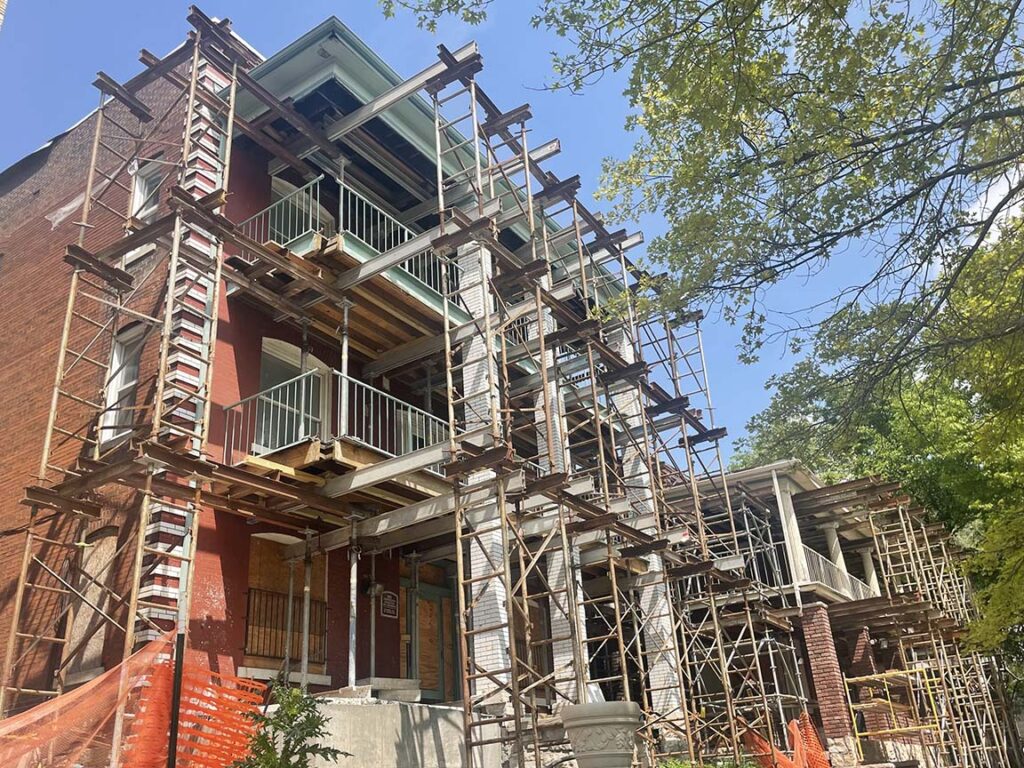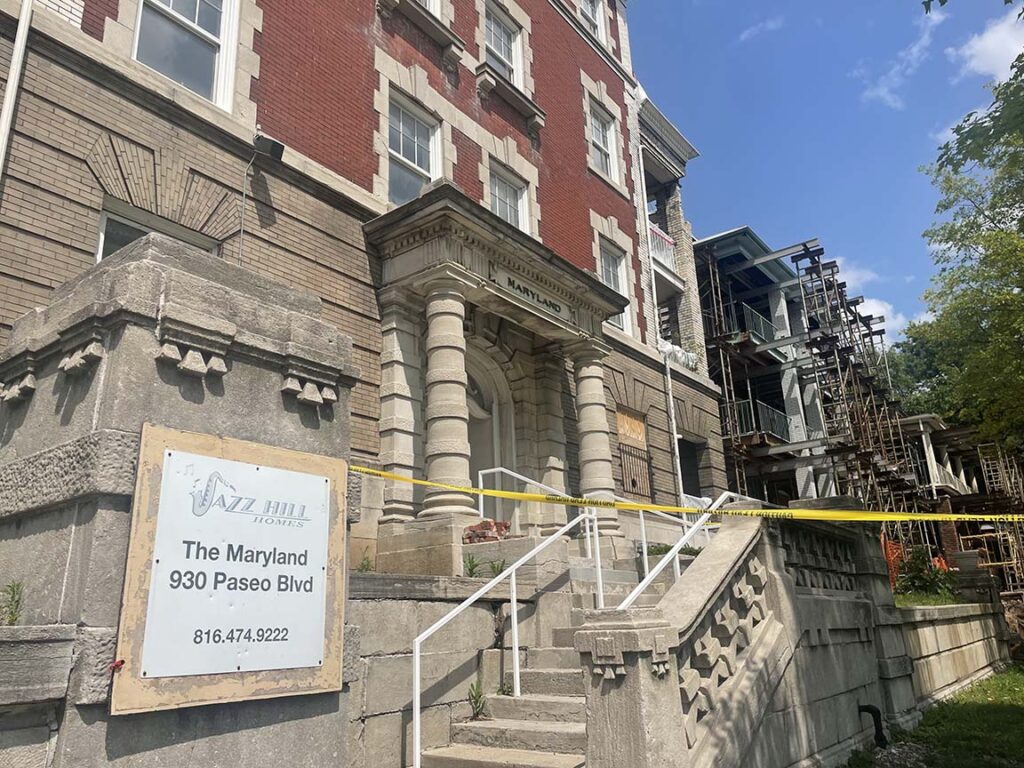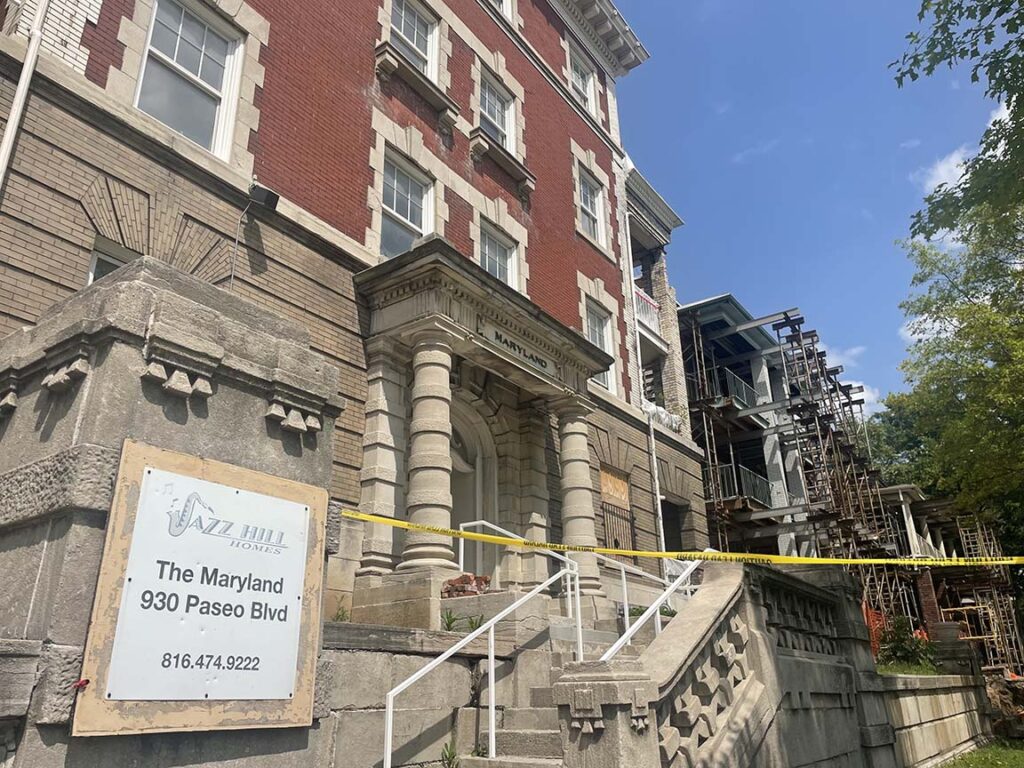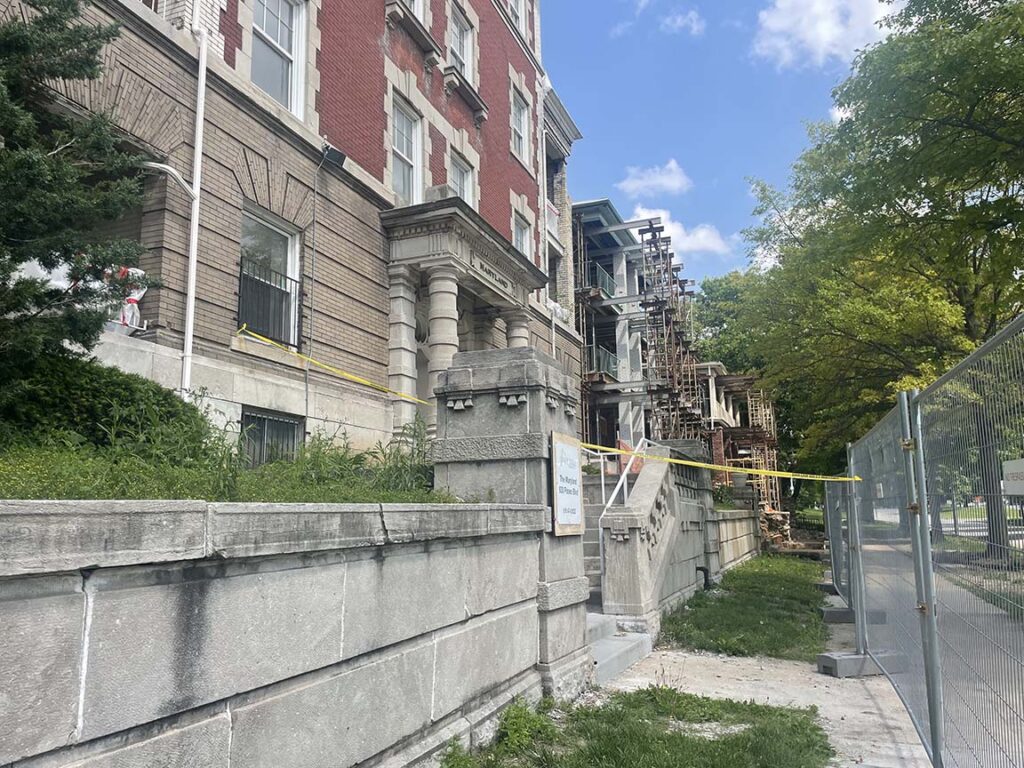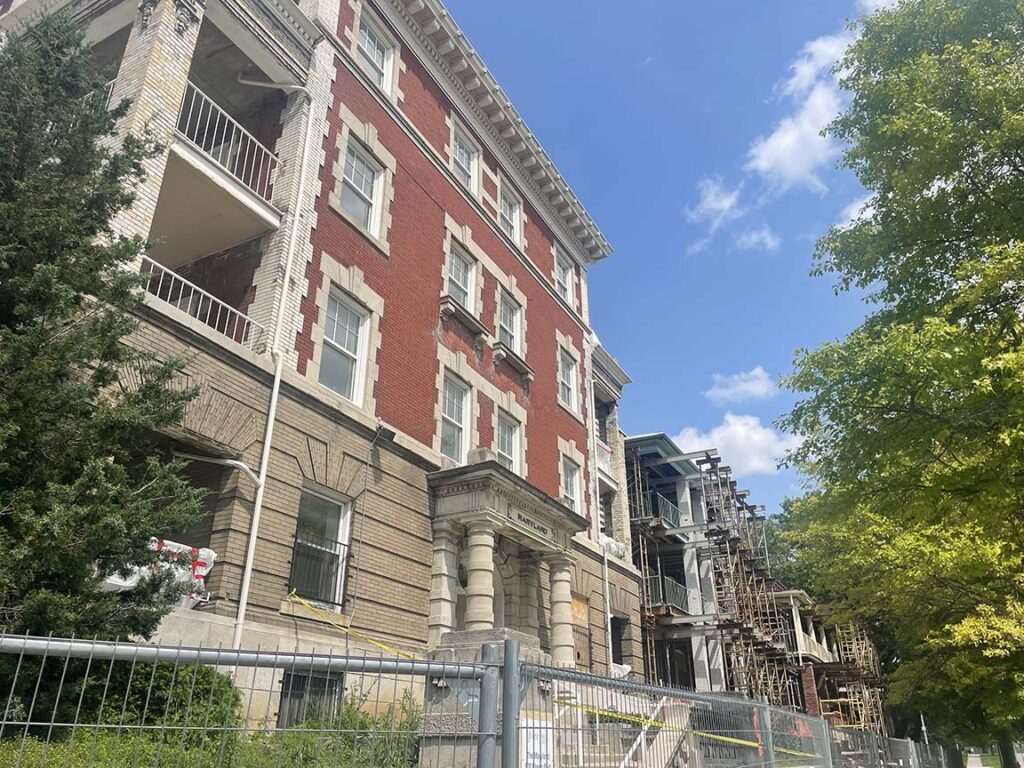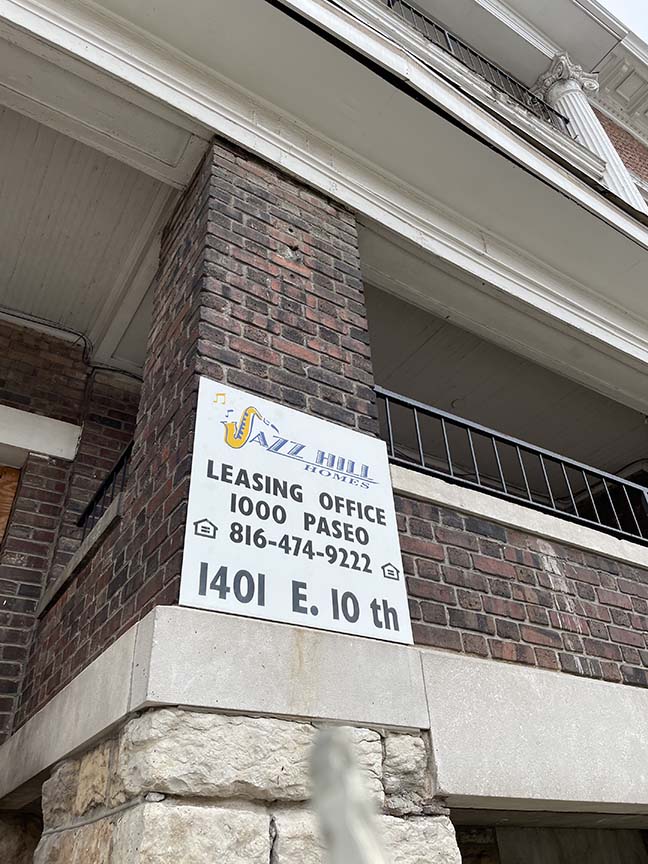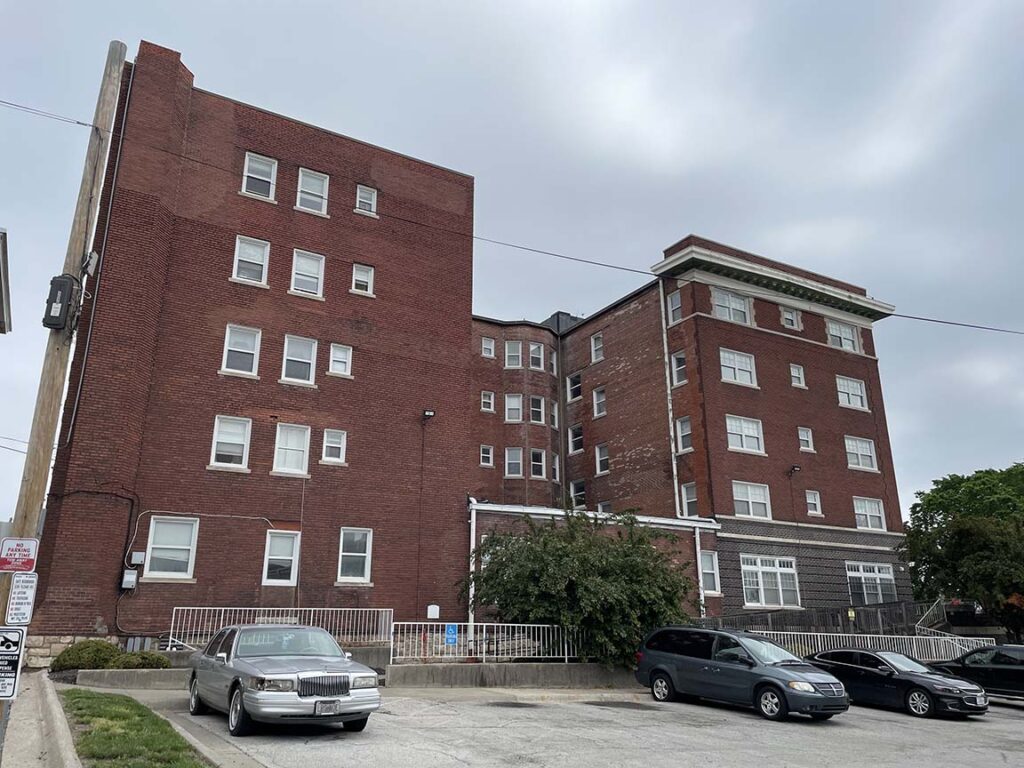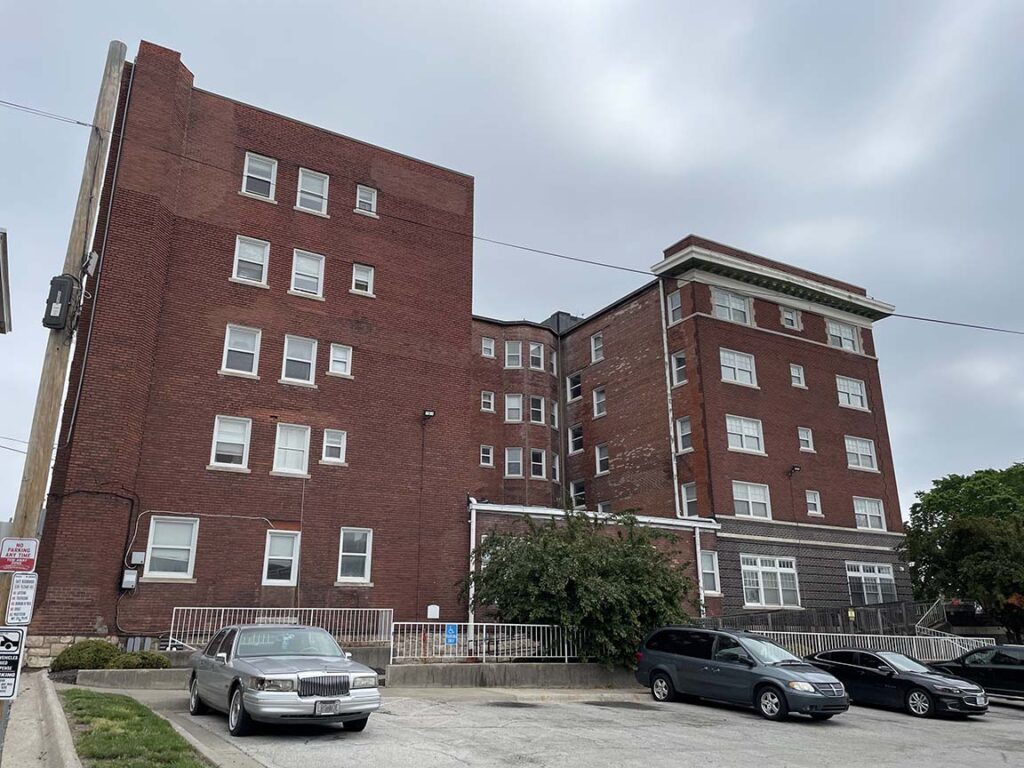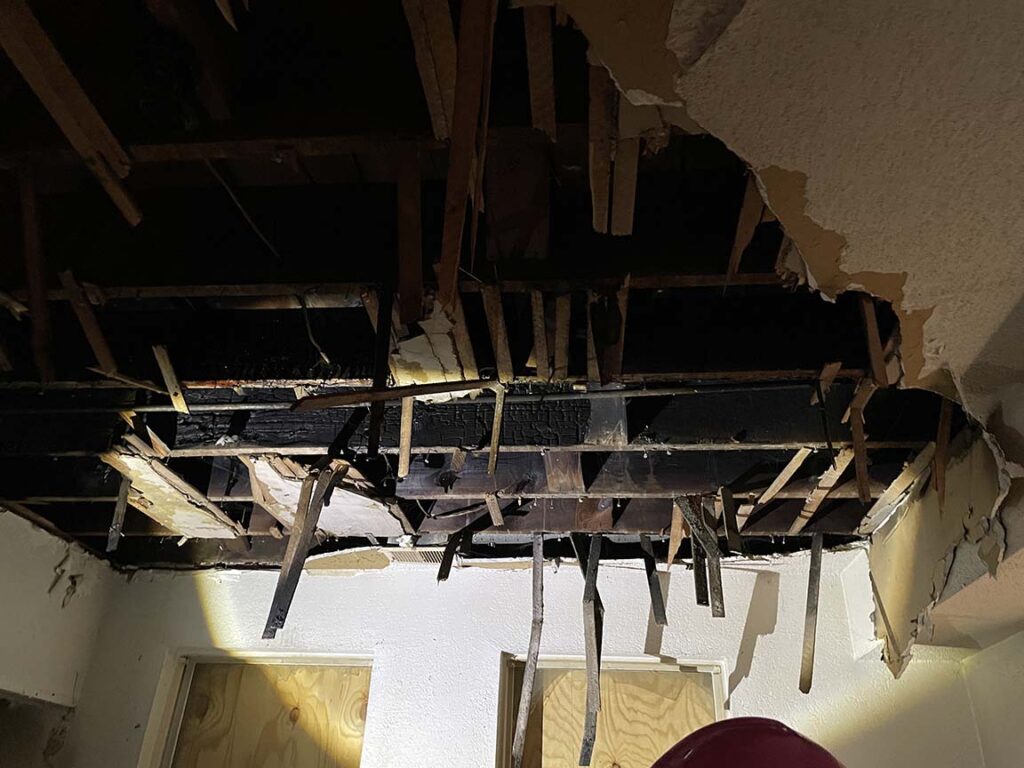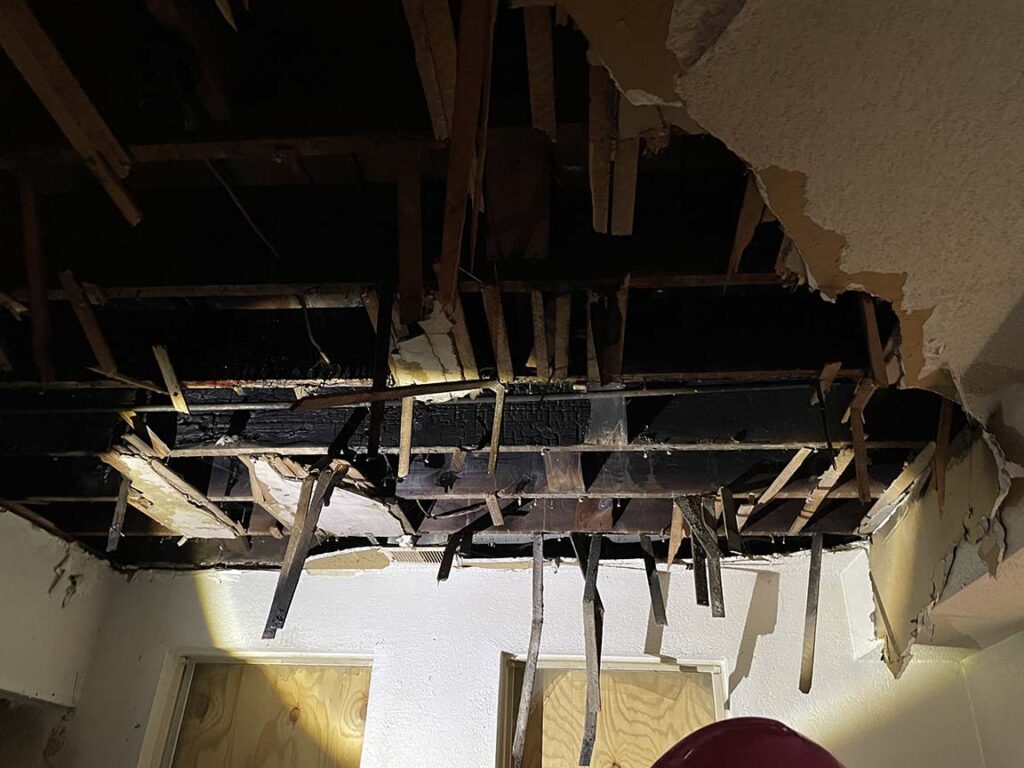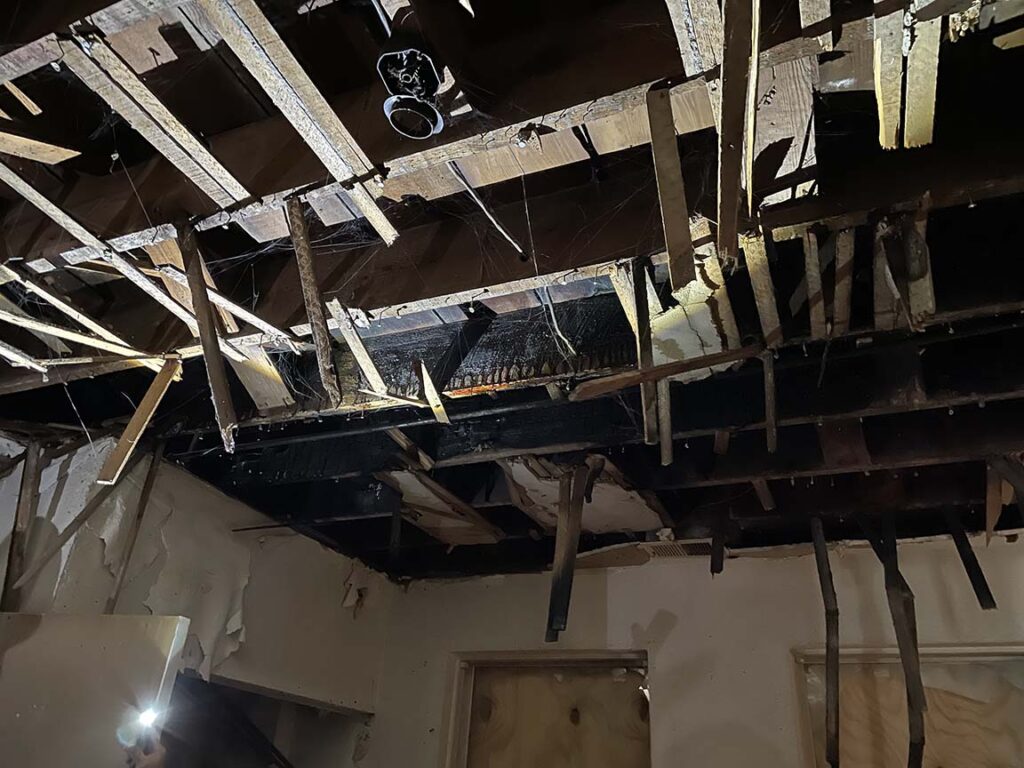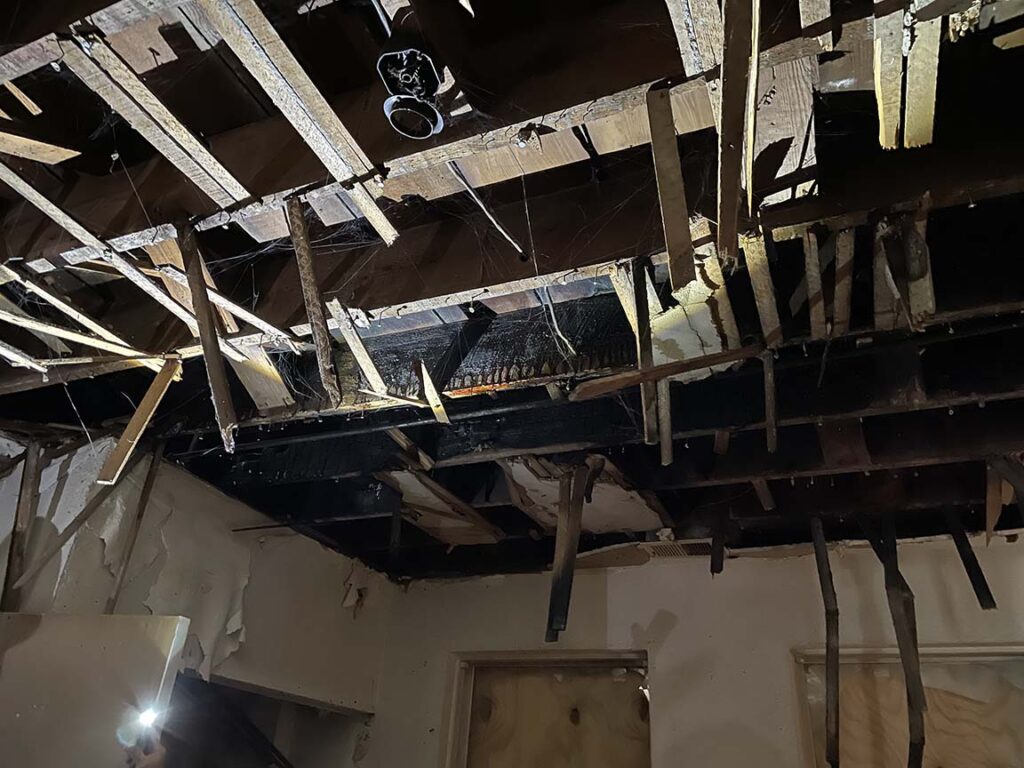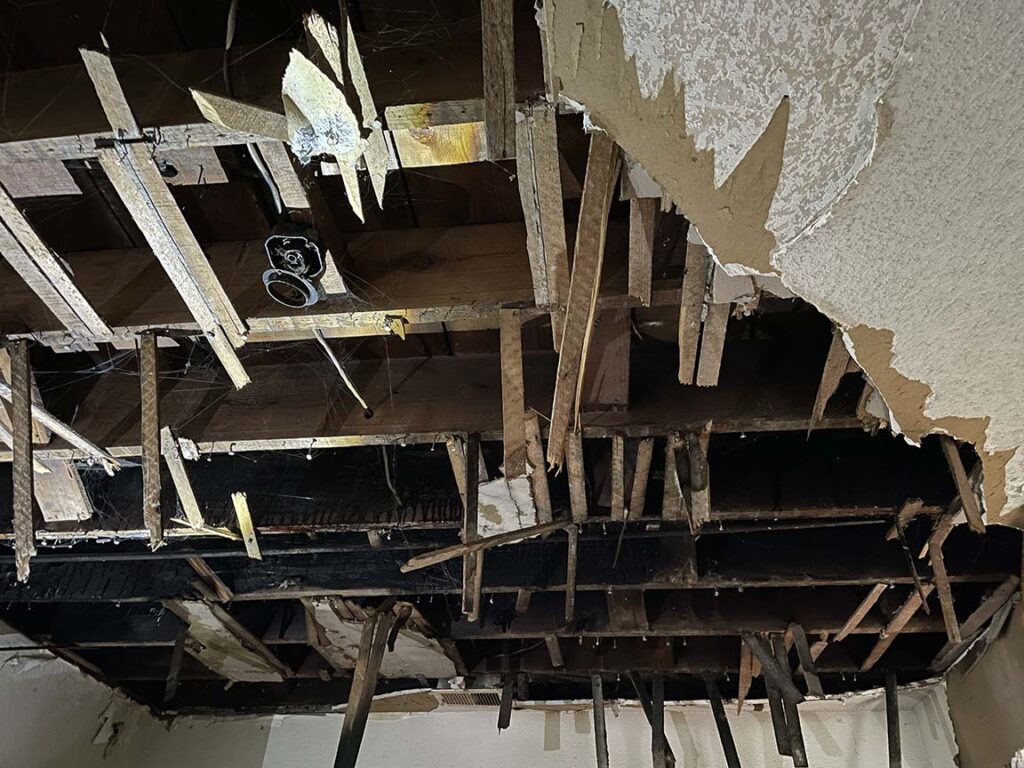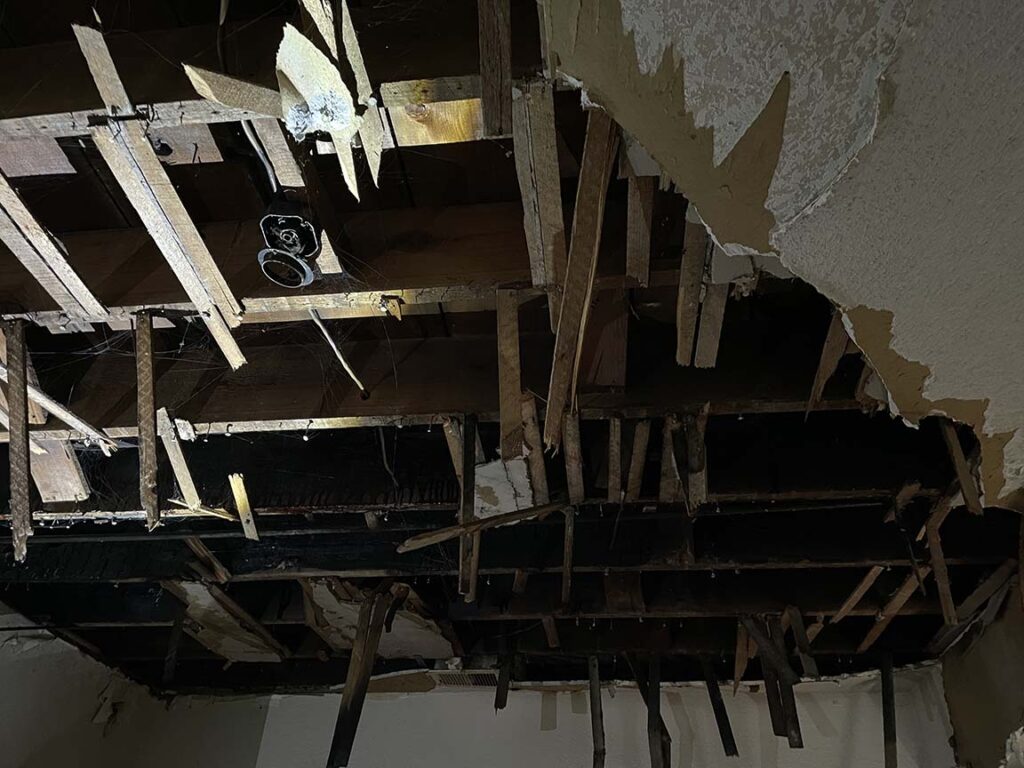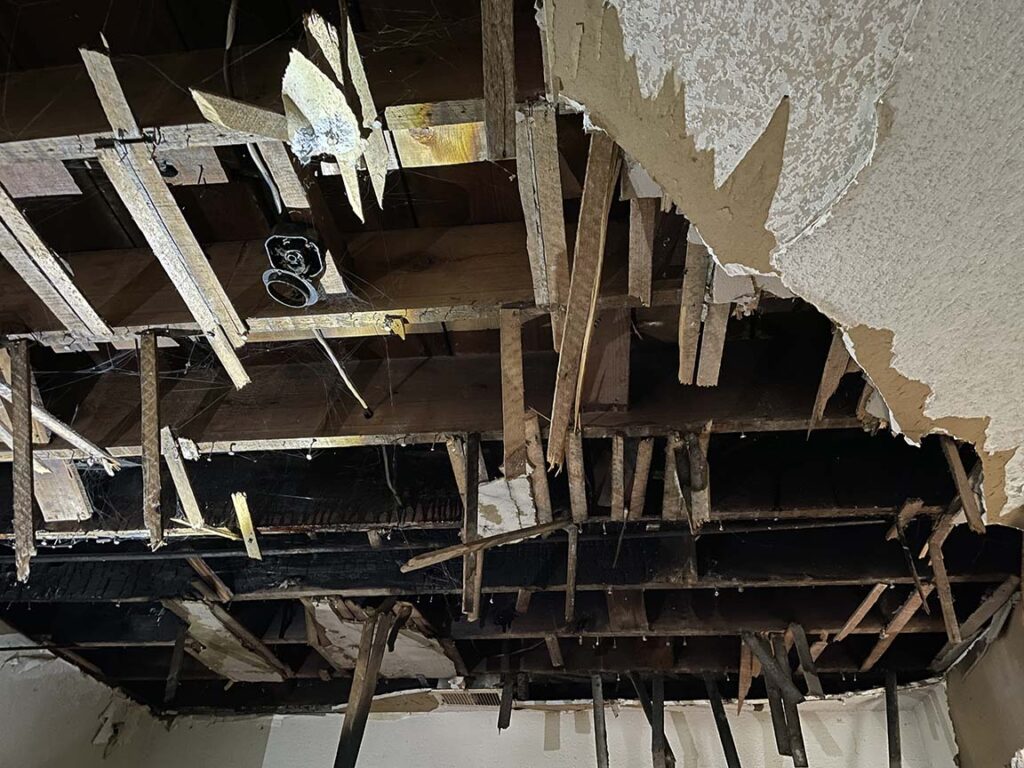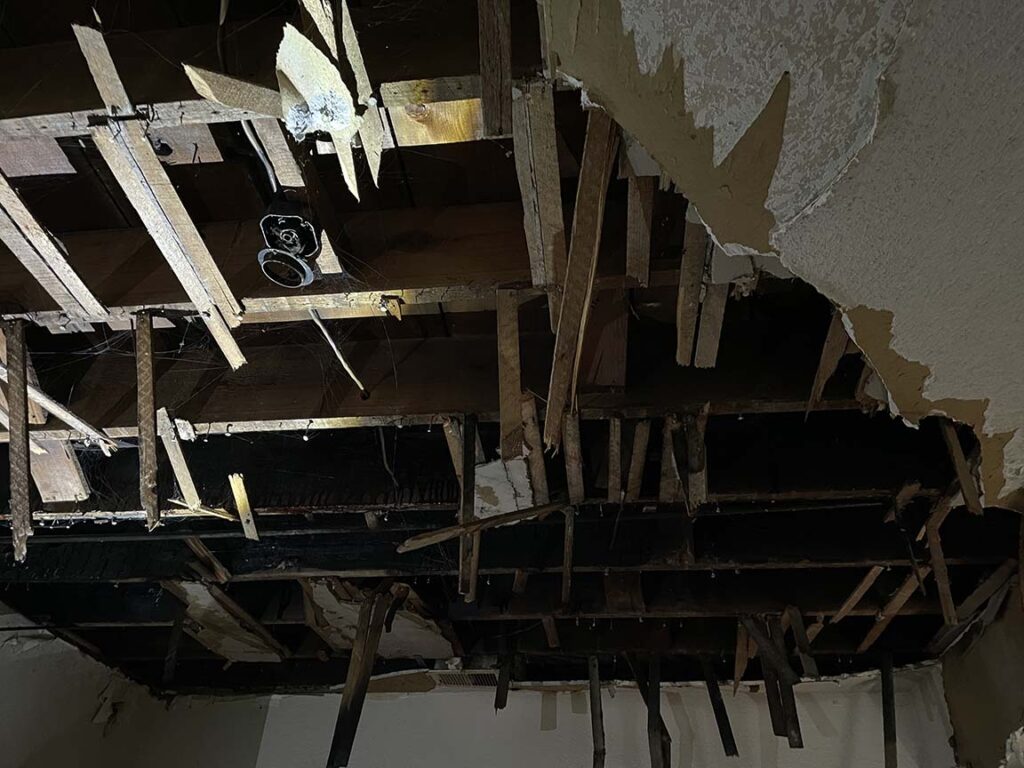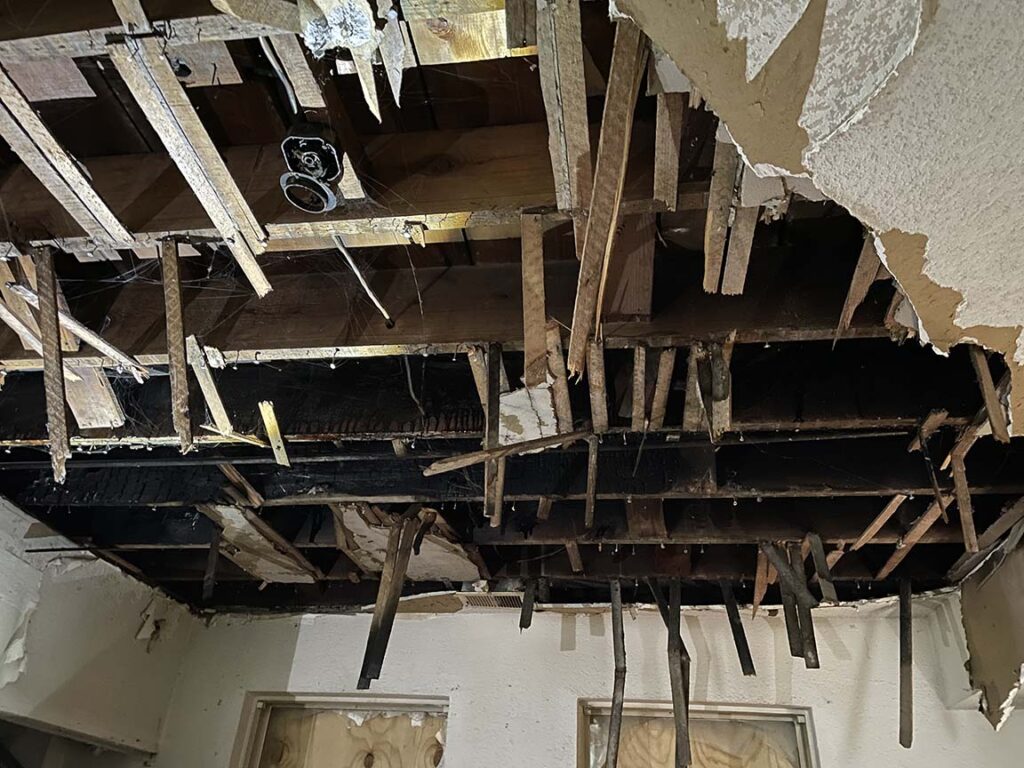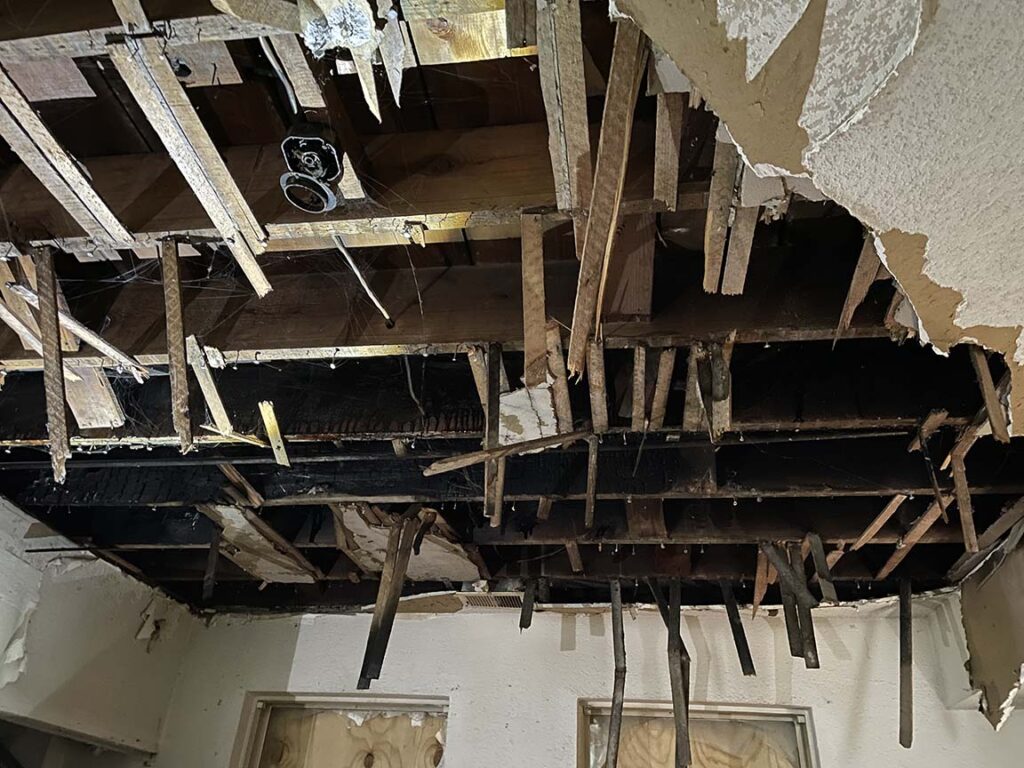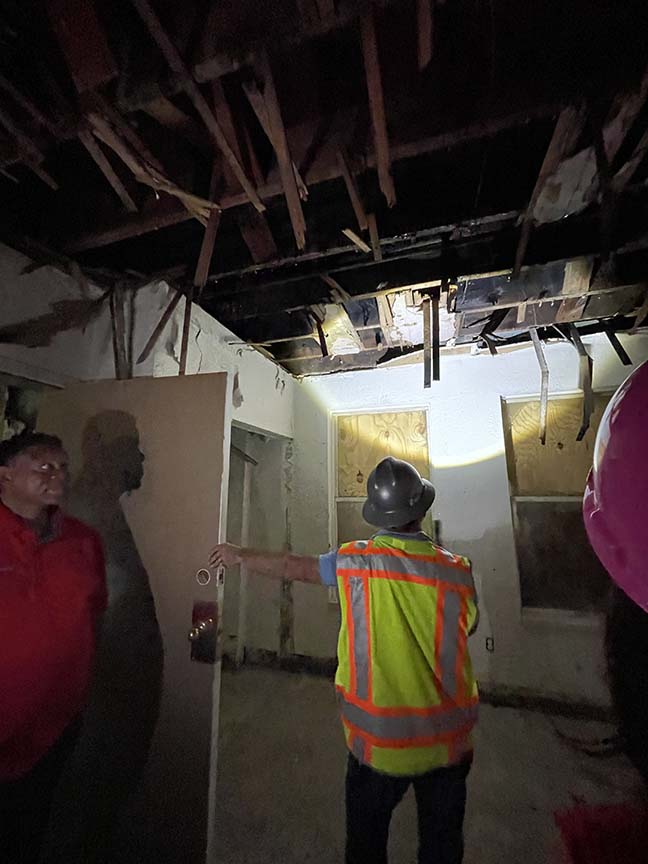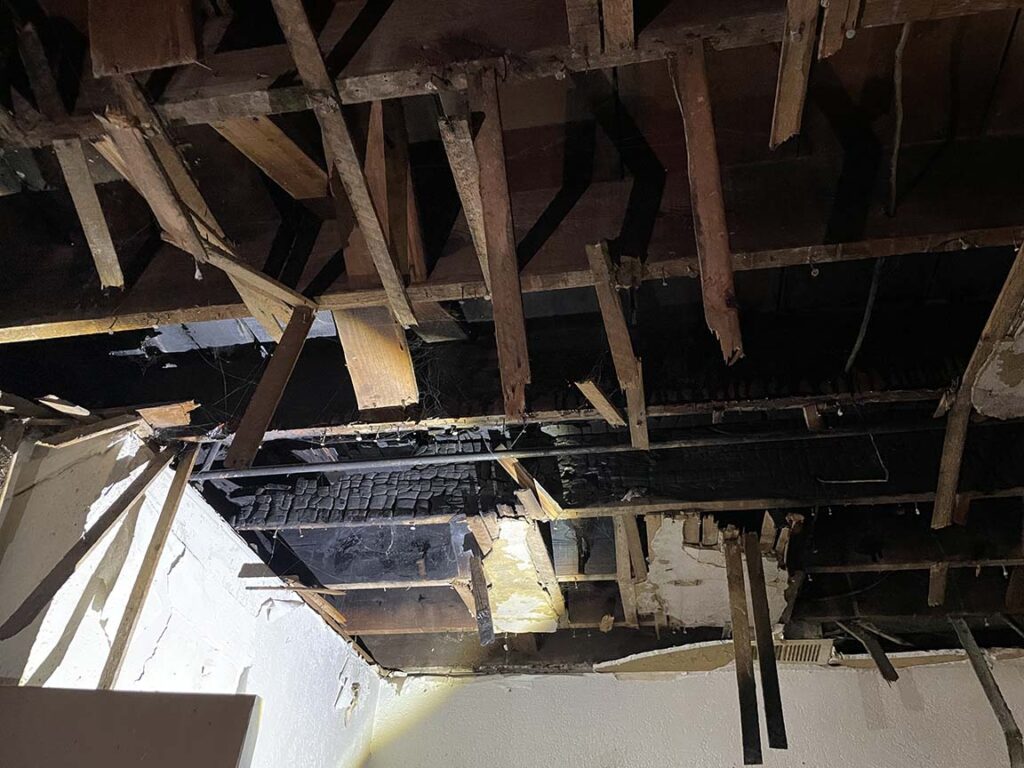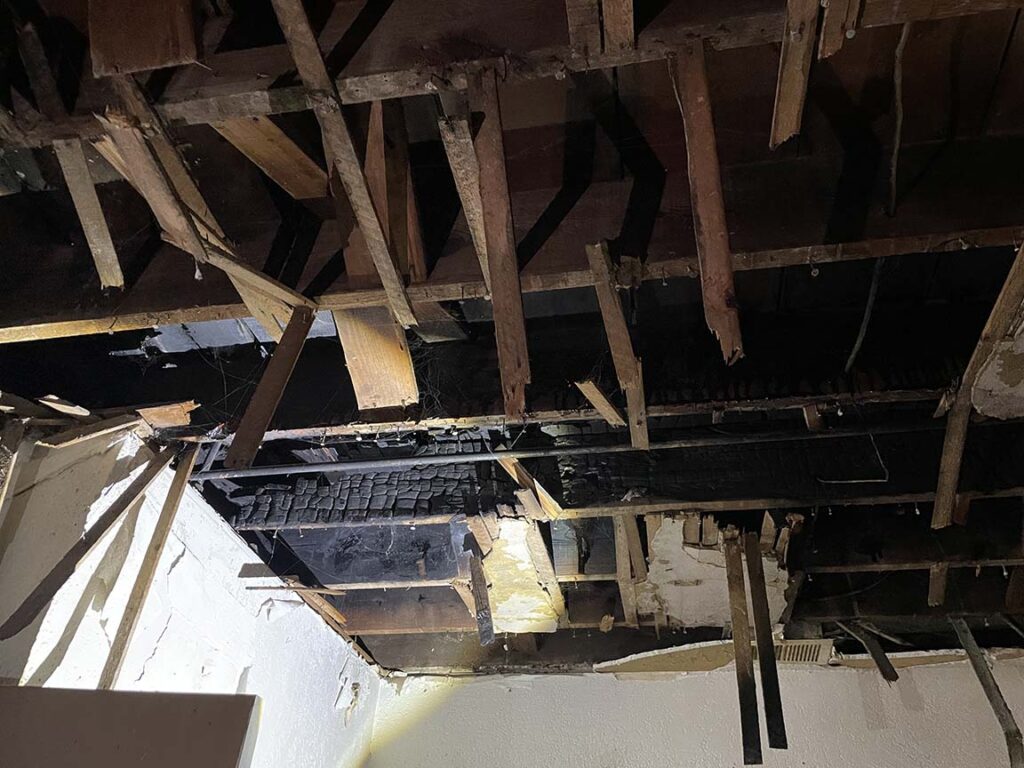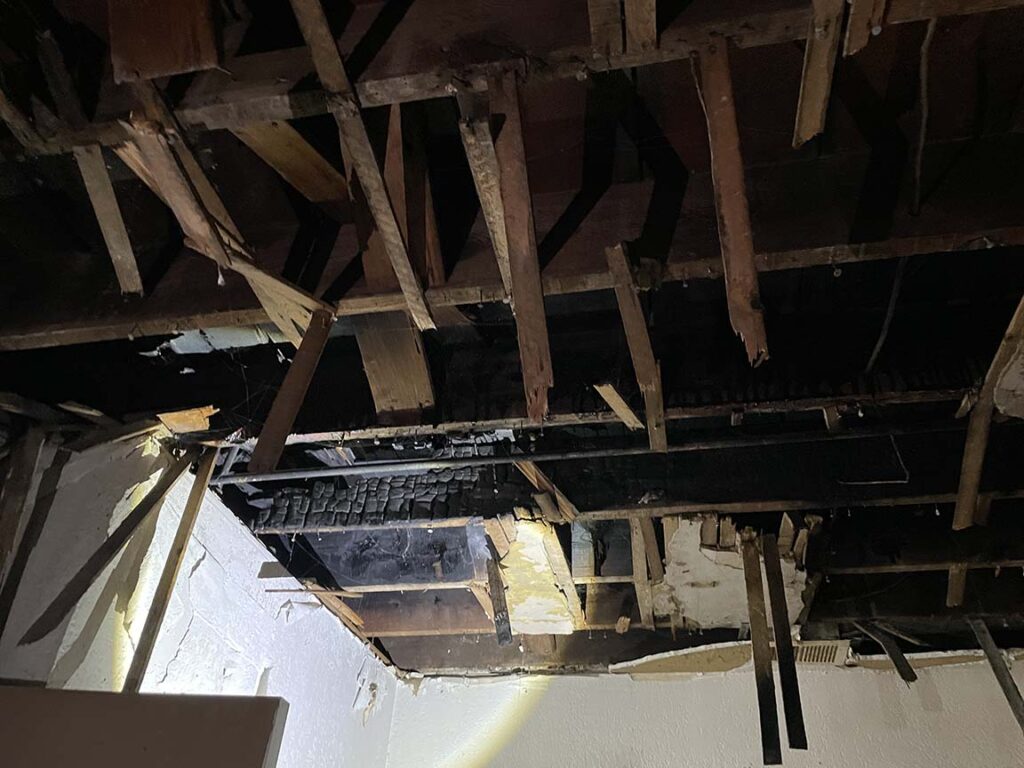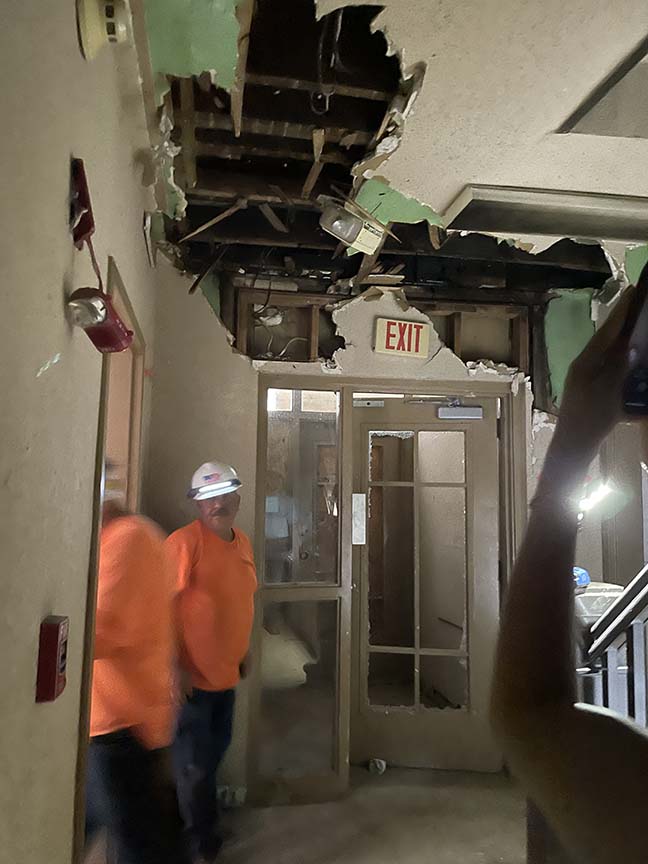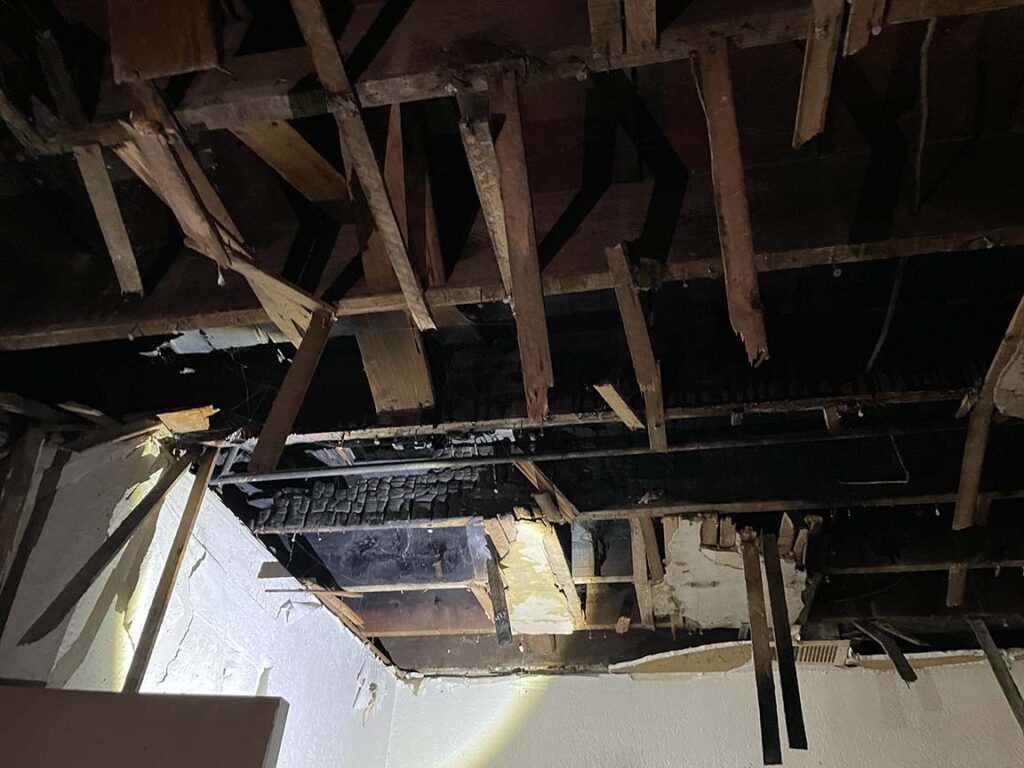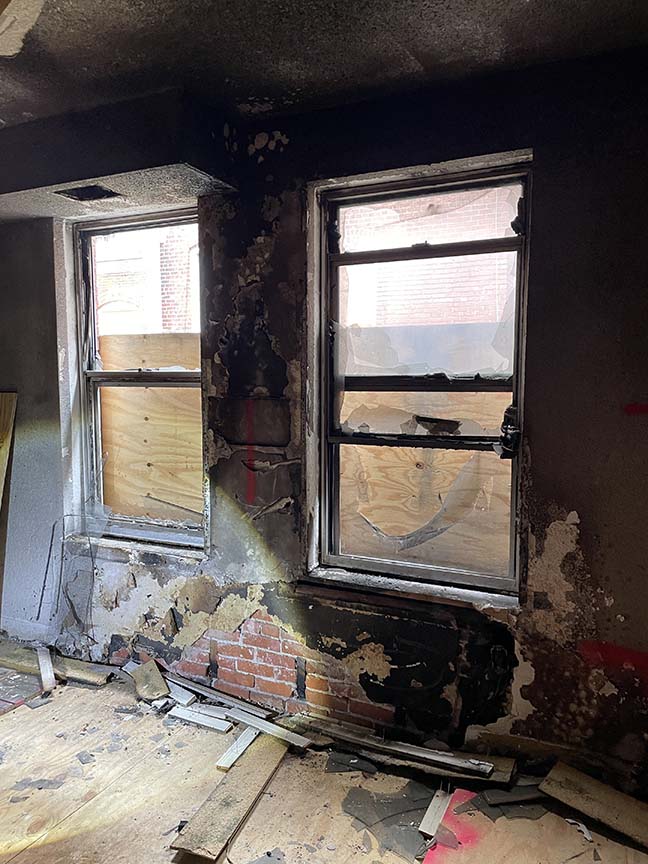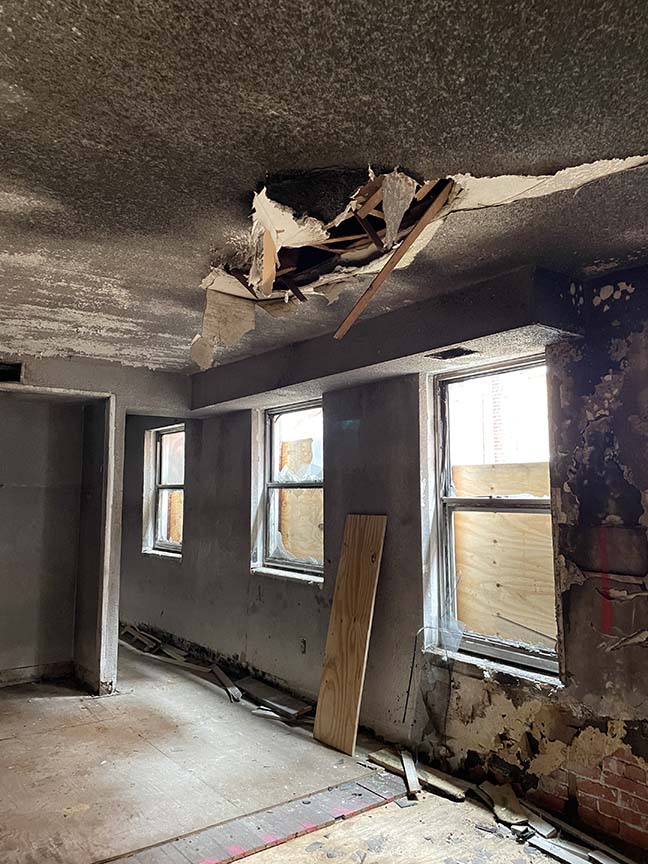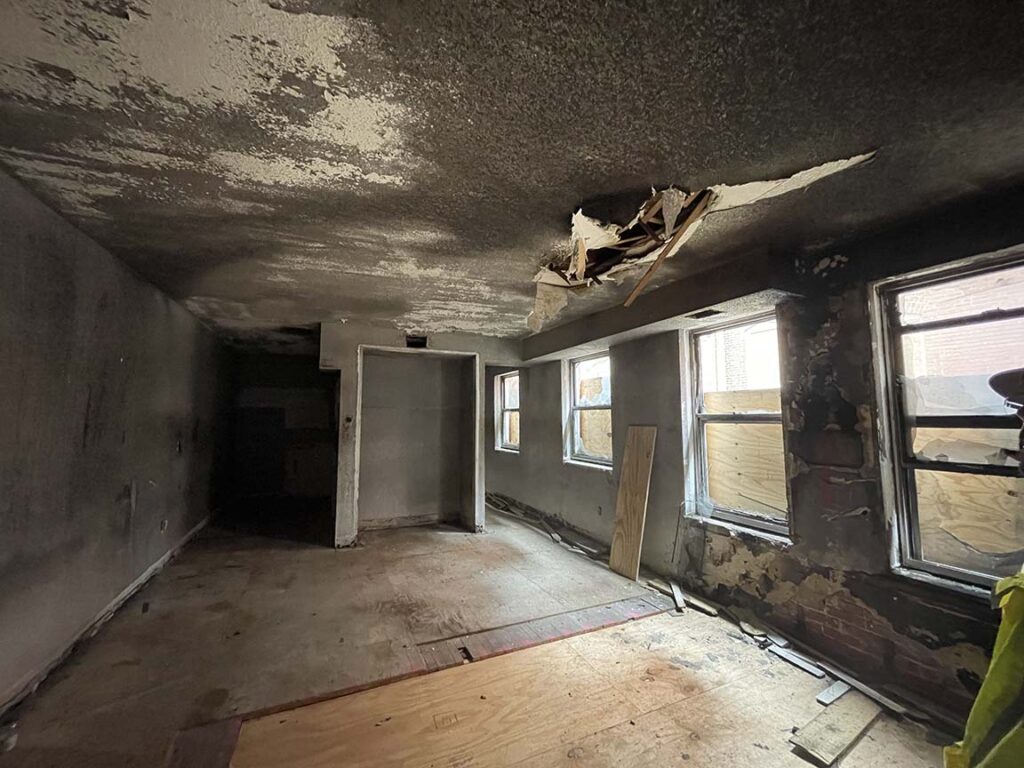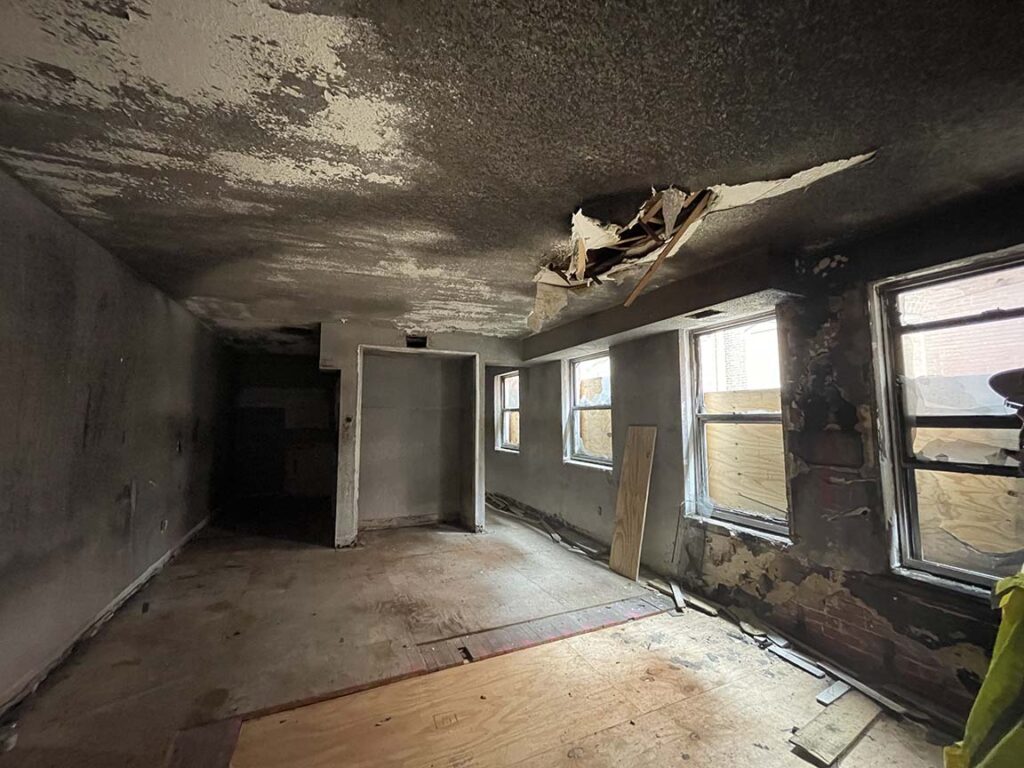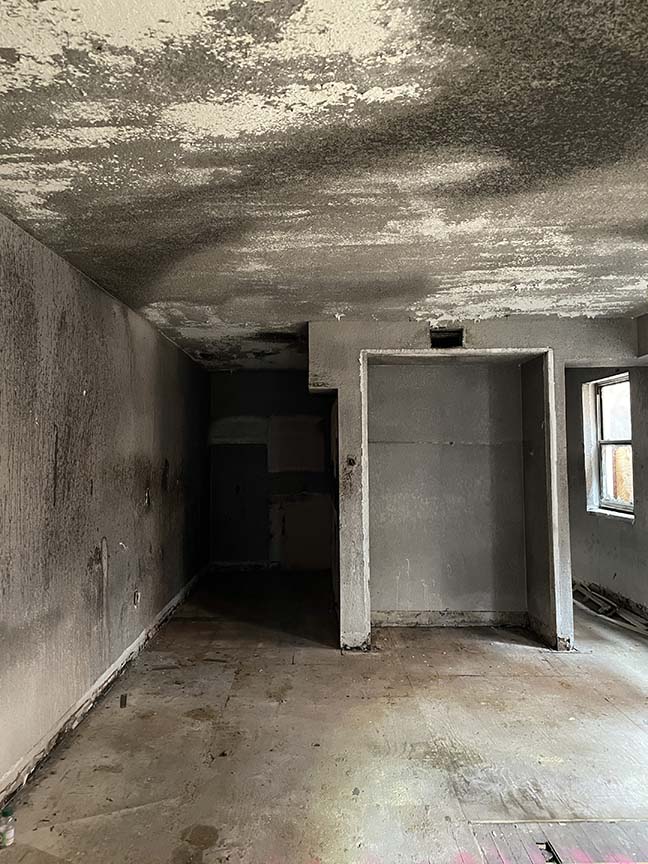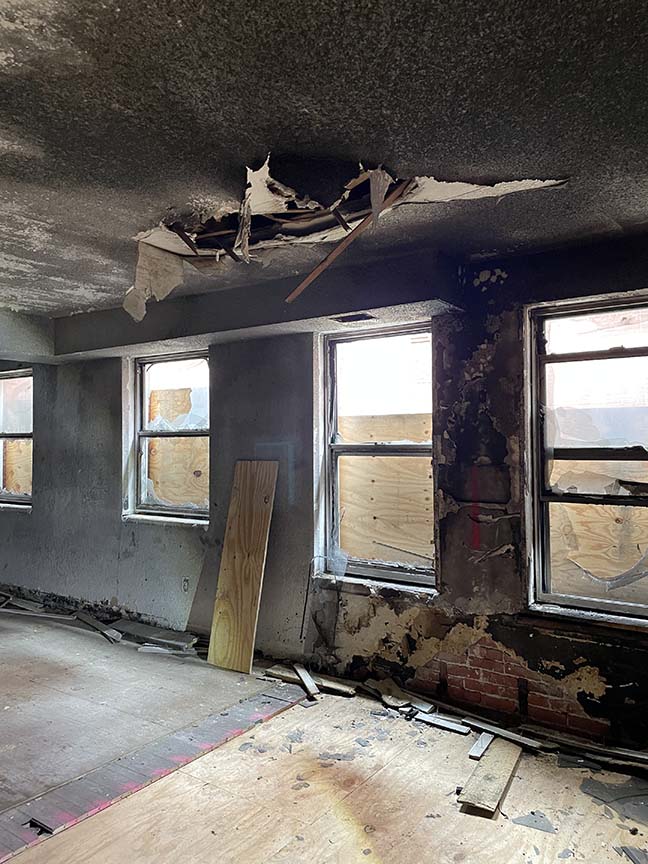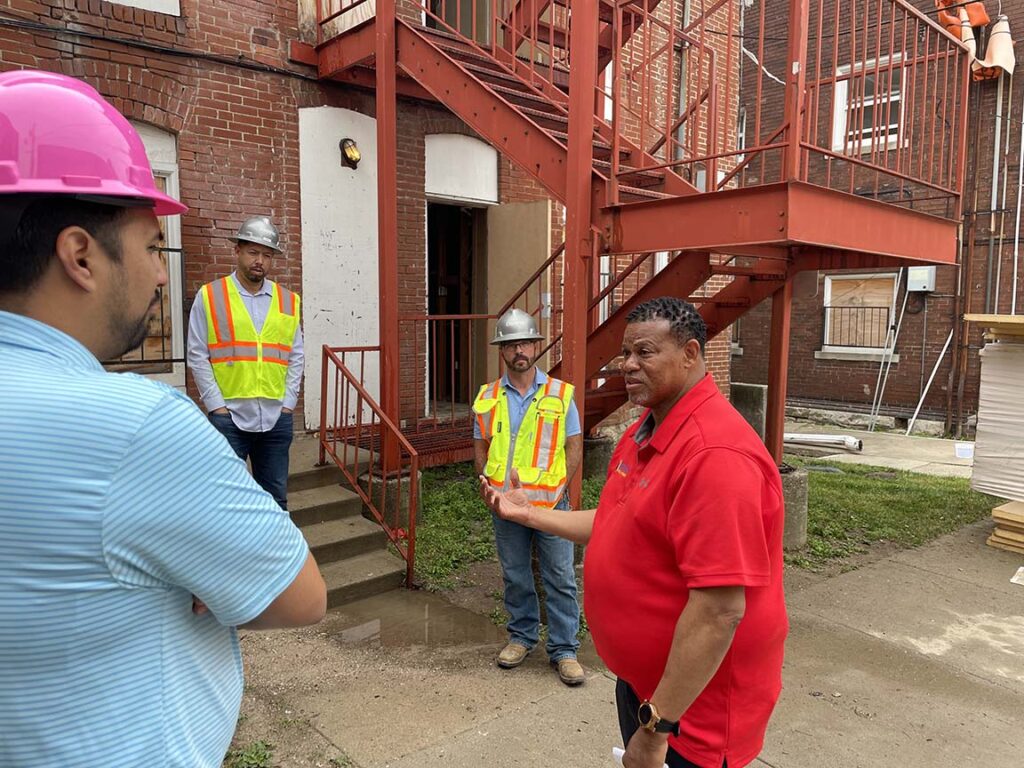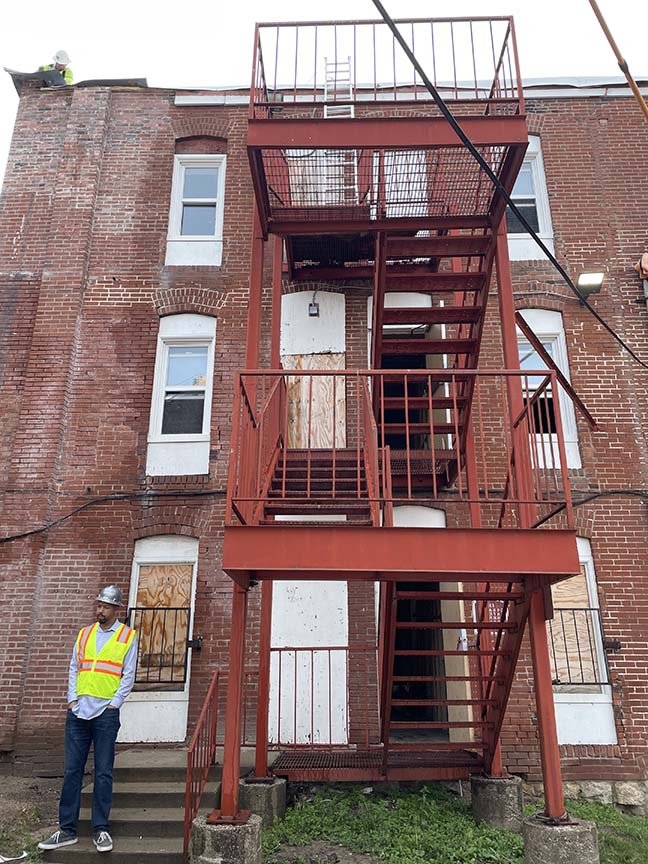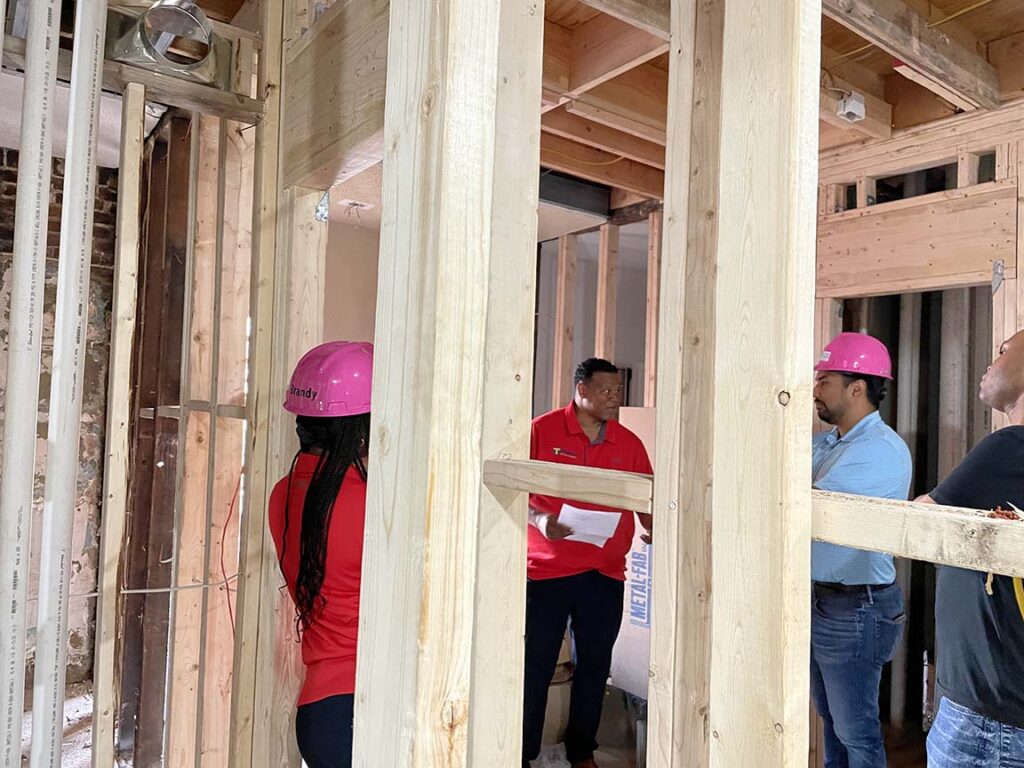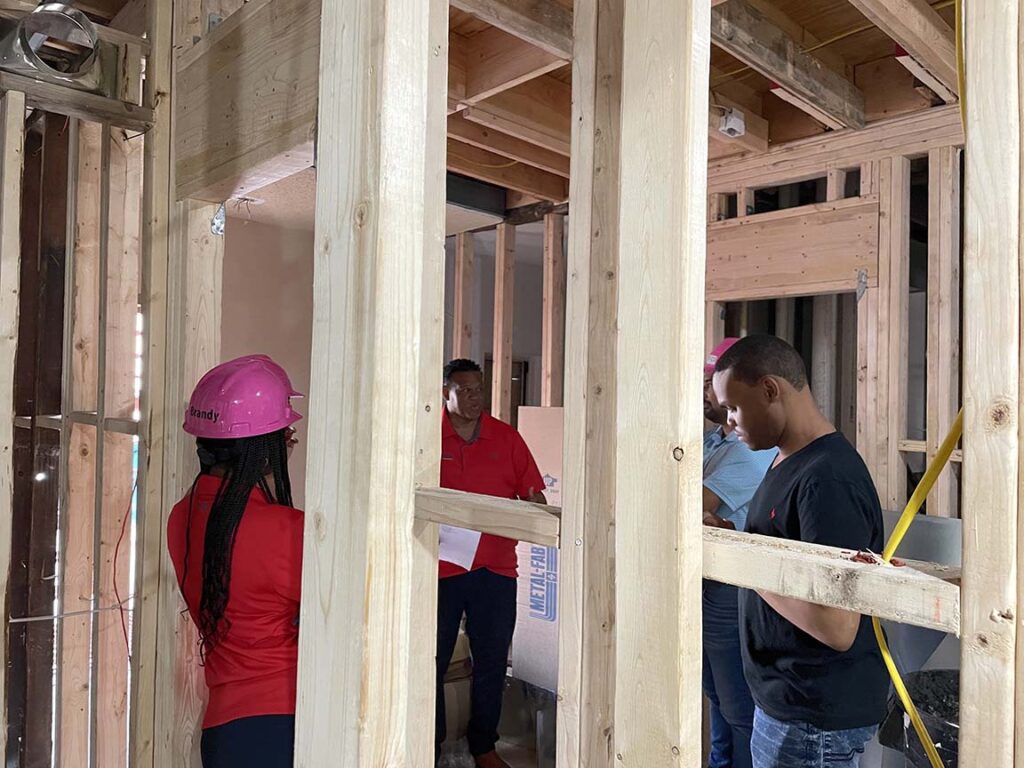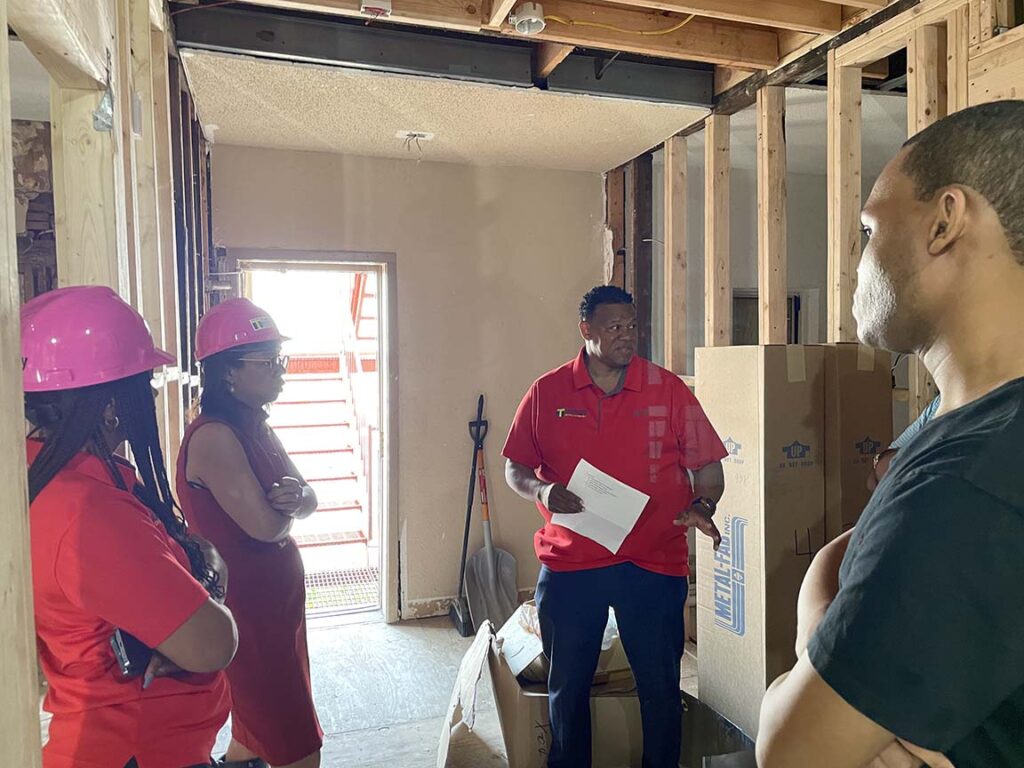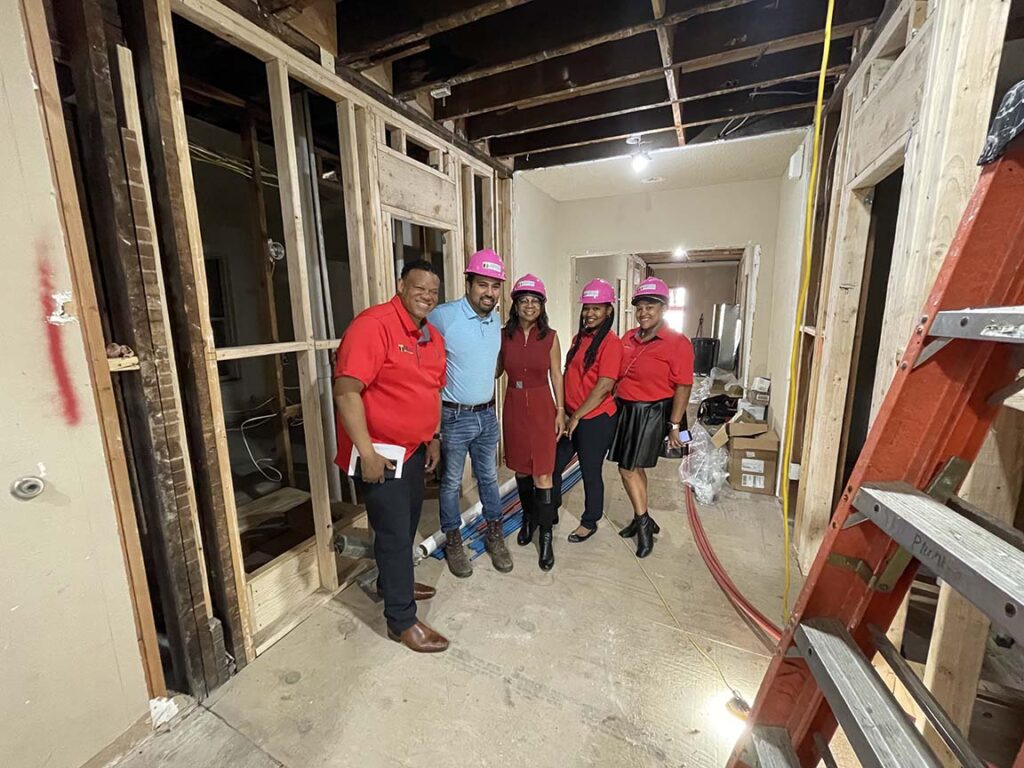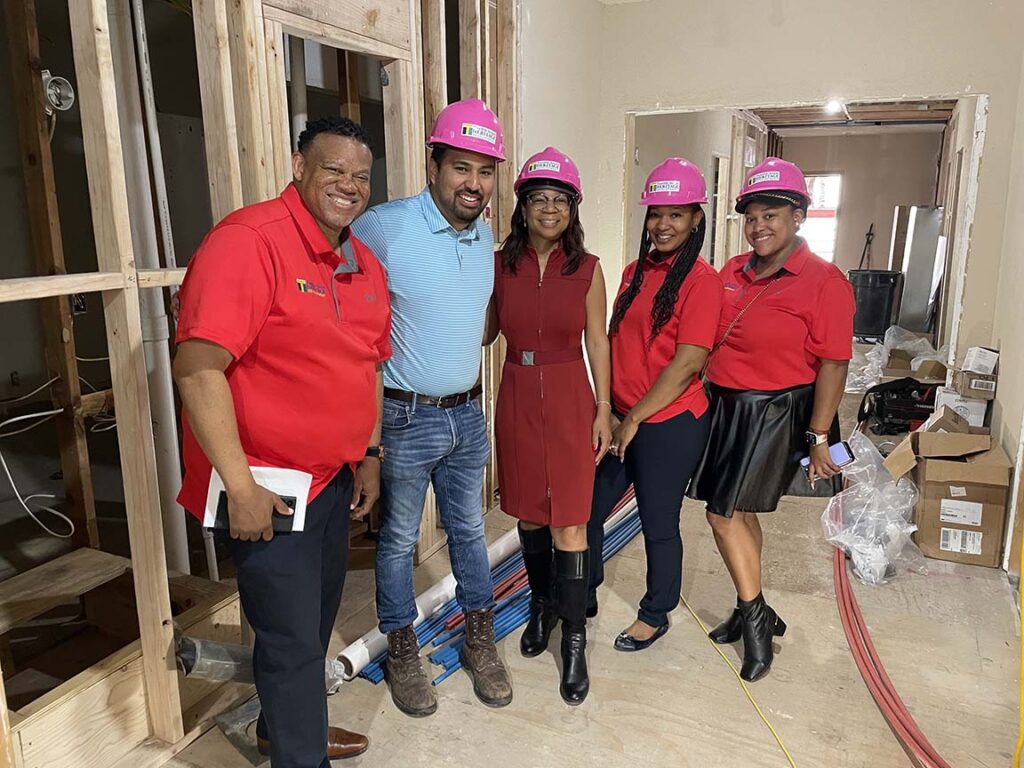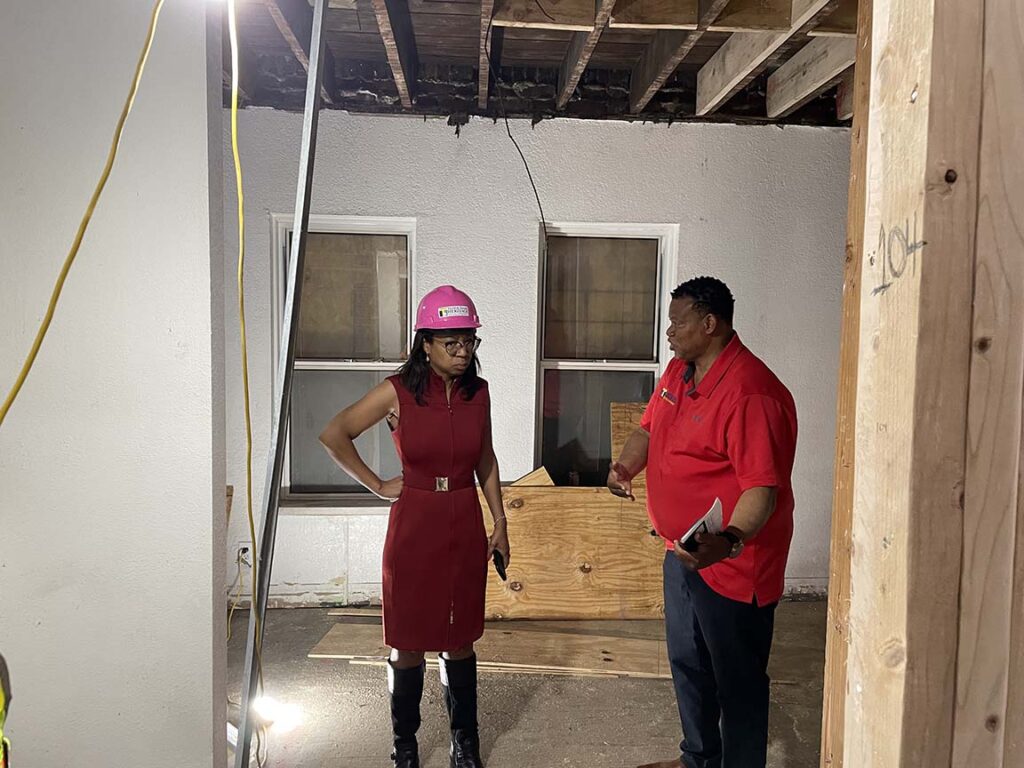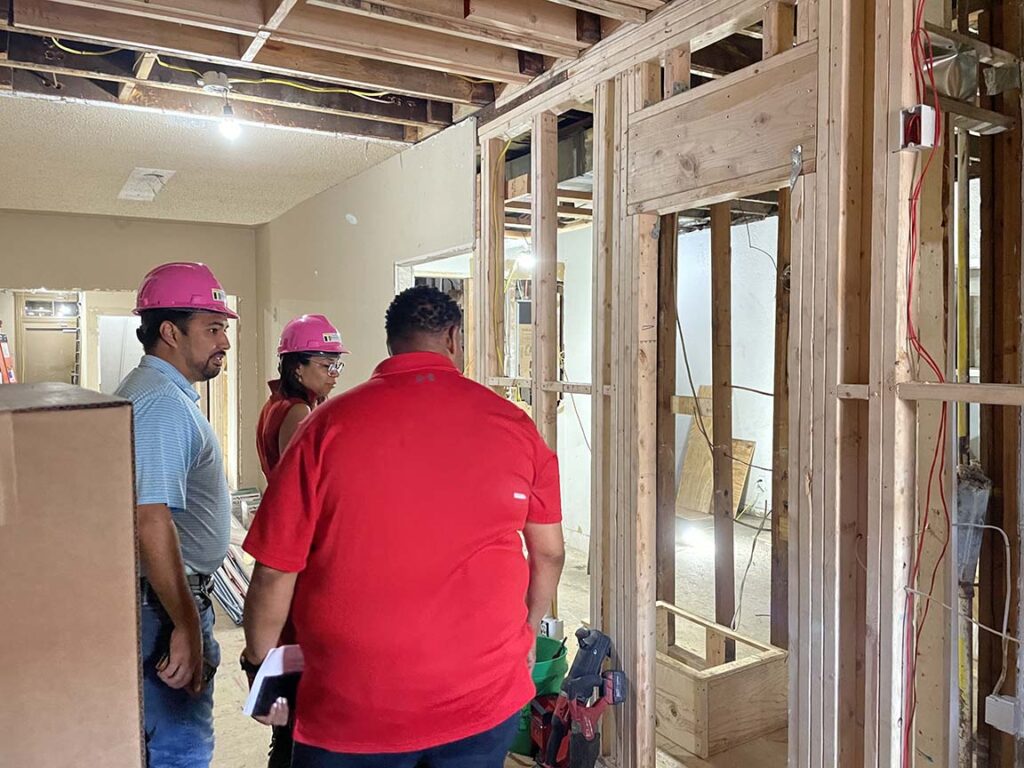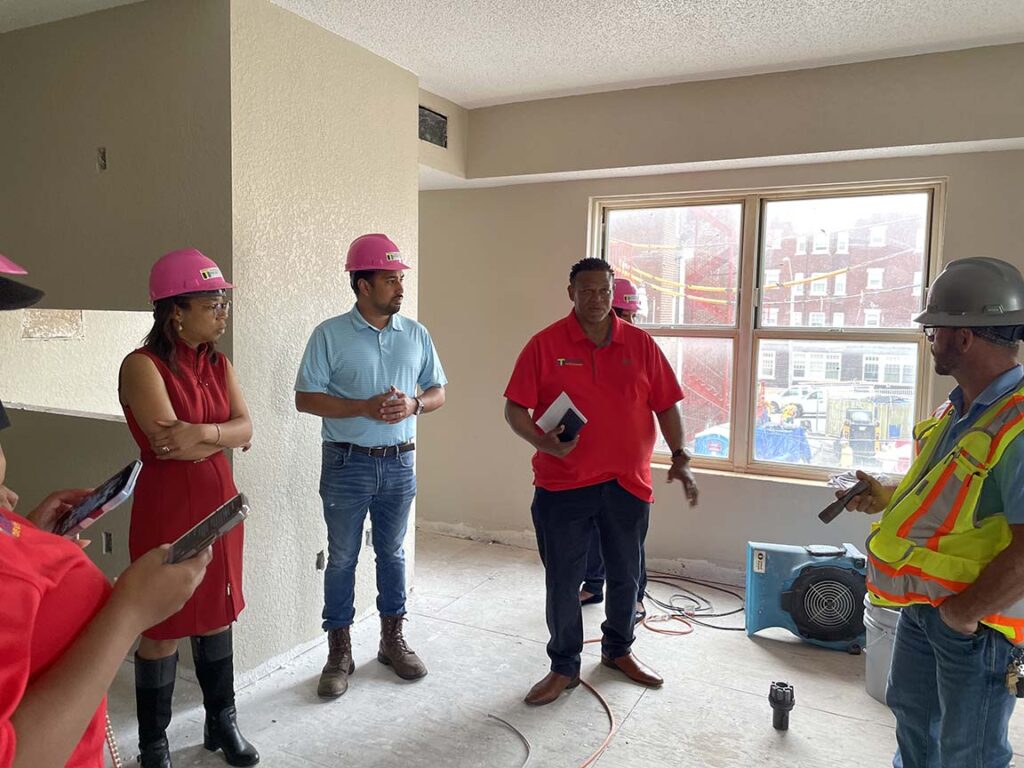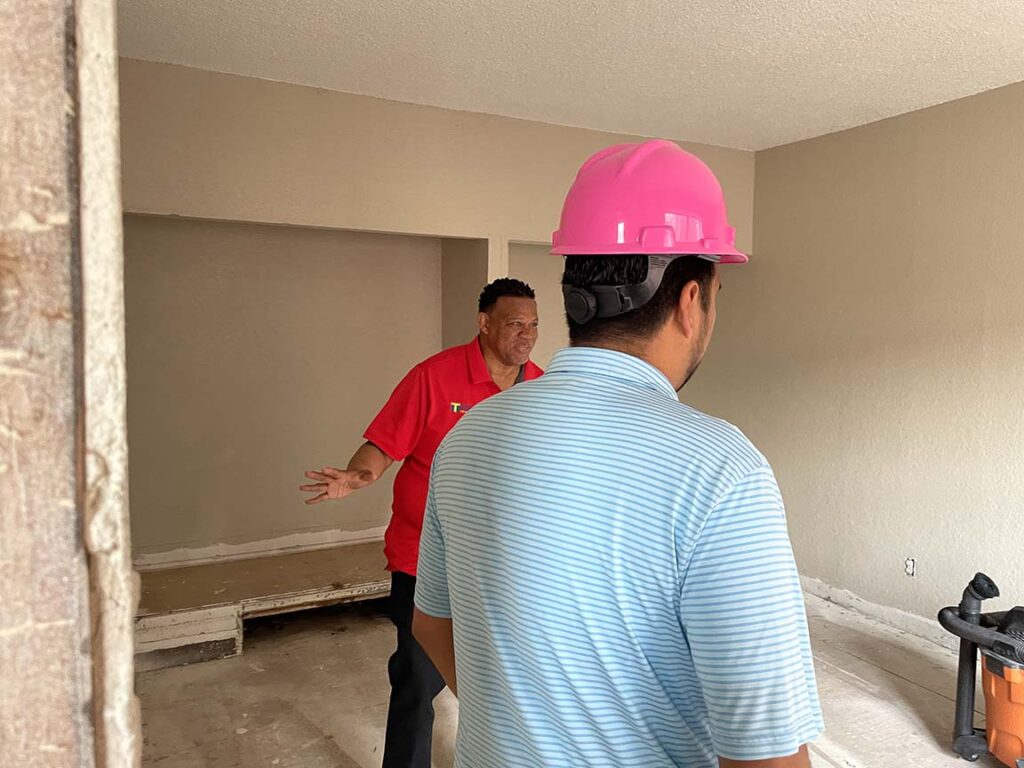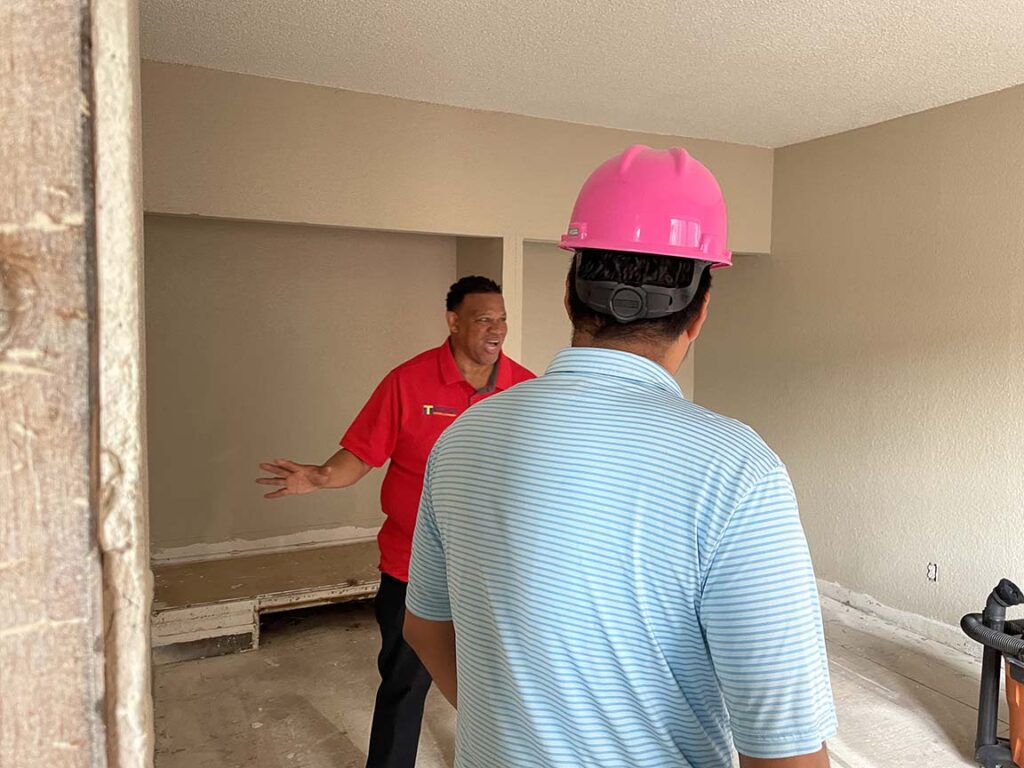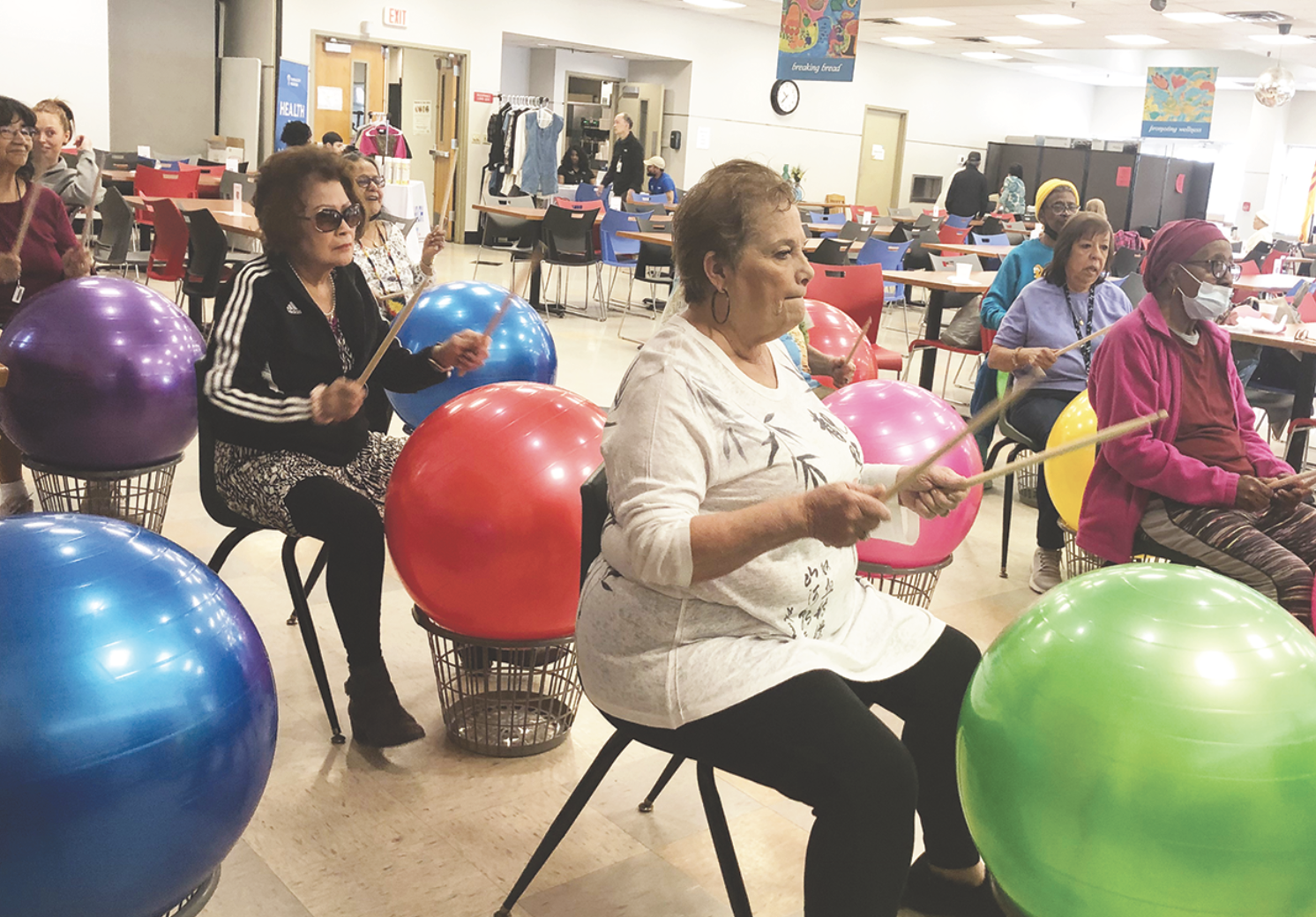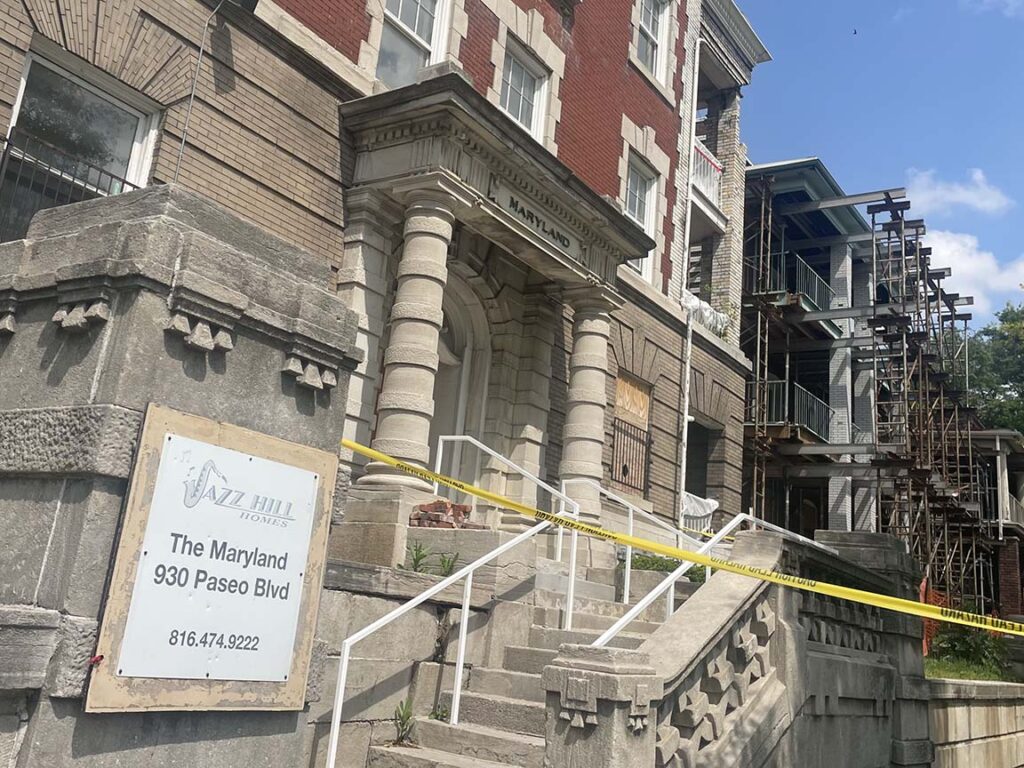
Abby Hoover
Managing Editor
The Twelfth Street Heritage Development Corporation (TSHDC) plans to open the first of 11 Jazz Hill apartment buildings on The Paseo Boulevard, following an extensive renovation of the historic building, in June. When completed, the project will put 197 units back on the market at affordable rates, following decades of neglect and deterioration.
Dwayne Williams, CEO of TSHDC and urban neighborhood advocate, said the project is in month four of a nearly 18 months timeline, with buildings opening up one by one as they’re finished.
One building still has tenants who are living in pre-renovation conditions. They’ll be offered apartments in the newly renovated first building.
“The hardest piece was getting them cleaned out,” Williams said. “You know, most of them have been abandoned for years and had rodents – all kinds of things in the buildings – and homeless people, they caused a lot of damage to the buildings. Some of them had fires in them that had been set. So it was a matter of getting through the buildings, structurally understanding where you’re at with the buildings.”
They couldn’t know how much damage had really been done until work began and they started to open up walls.
The project was a long time coming for Williams, who is a longtime supporter of development in East Side neighborhoods.
“I think we had been asked about five years ago to purchase the buildings, and it just wasn’t on our radar at that point,” Williams said. “We were doing some other things. The asking price was extremely high, and so we just said we’d just sit and wait for a little bit and see if that thing repeats itself and revisits itself.”
Years later, he got a call from TSHDC’s partners at Flaherty & Collins, one of the Midwest’s largest and most experienced developers of multifamily properties, asking if they wanted to be involved in the purchase.
Able to benefit from the Central City Economic Development (CCED), a sales tax of 1/8 percent to fund economic development projects on Kansas City’s East Side, the timing was right. When they took possession, two buildings had tenants and the other nine were abandoned and boarded up. The project received $4 million in CCED funds, without which Williams said the project wouldn’t have happened.
The project was financed with 4% Low Income Housing Tax Credits from Missouri Housing Development Commission (MHDC), Federal and State Historic Tax Credits and tax-exempt bonds from the Planned Industrial Expansion Authority (PIEA) incentives.
TSHDC was founded in 1984 as a Community Development Corporation (CDC).
“Our main priority and objective for this community was to make this a safe, walkable, livable community,” Williams said. “So as a result, most of the structures that you see that are newly built or houses that have been built have been under the leadership of Twelfth Street Heritage Development Corporation since 1984.”
As a CDC, their charter is to develop affordable housing, but they’ve also done market rate housing.
All 197 units in the Jazz Hill project will be affordable based on income. They have 25 Housing Authority of Kansas City Section 8 vouchers and one unit set aside for a veteran voucher. There will be 14 studios, 147 one-bedroom and 36 two-bedroom units.
Many buildings, in the classic Kansas City Colonnaded walk-up flat style, have historic characteristics. While some buildings have standard apartment sizes mirrored throughout the different floors, others have unique angles and different layouts depending on the unit. Some sat vacant for 25 years.
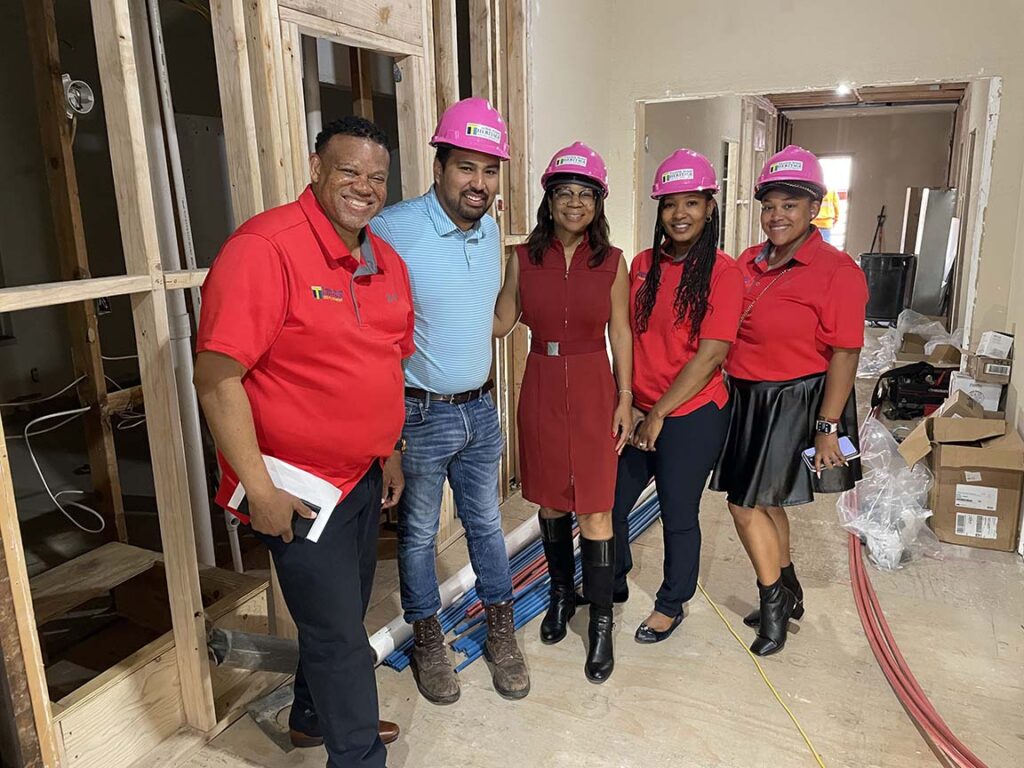
“These were built over 100 years ago, so back then, they didn’t have the same standards that they have today as far as the same layout everywhere,” Director of Operations Alexis Williams said. “Each building is unique and different. Now, these are historic so some things we do have to keep intact, but each building we have been trying to kind of maintain some type of layout that is the same in that building at least.”
The first building to open, 900 The Paseo Blvd., has eight one bedroom apartments. During construction, their contractor, Centric, hasn’t moved walls or changed the layout of any of the apartments. Each building will have unique amenities based on what space allows.
Next door to the south, there are 12 units, then 16 at the building after that. The project required abatement of some type at 8 out of the 11 buildings. Williams estimates they will spend at least $100,000 per unit, but knows its necessary work, including preserving the masonry, historic windows, porches and columns, while providing all new appliances, HVAC, roofs, flooring, bathrooms, cabinets, lighting, and elevators. He said Kansas City is short 10,000 affordable units of housing.
While TSHDC works on projects throughout Kansas City, and even in other states, their main focus has always been on Kansas City’s East Side, which Williams extends to Northeast.
“As we grow, we’ve moved out of a smaller arena into a larger arena,” Williams said. “ When you have partners such as we have – Flaherty & Collins is one of the largest developers in the country – it gives us the latitude to do bigger, broader projects that only a group our size and Flaherty & Collins size can do a project like that.”
A project like the Jazz Hill apartments is probably the most complicated, most difficult project that anyone will ever have to do, Williams said. With all of the different obstacles and unique circumstances they encountered, he believes that’s why the buildings sat abandoned for so long.
Flaherty & Collins Property Management Company will manage the 11 buildings out of its local office.
“We’re intimately involved in making sure that those properties get maintained and stay looking great,” Williams said. “The [Paseo] Boulevard, that’s one of the major reasons why we wanted to do this project. We wouldn’t have done it unless we could do it the right way. When we bought the project, we started at $80 million. Once we got into the project, you could’ve just pieced them back together, but that wasn’t the right thing to do, it wasn’t what we were going to do and it’s not what we represent.”
The project will come in around $38 million when it’s completed, and they’re still seeking about $2 million in funding. Rising costs of materials have escalated their budget, but Williams said it’s worth it for what was once the grandest boulevard in the city.
For Williams, the uncertainty of it all has been the most challenging aspect of the project.
“Every time we turn a corner, open up a new wall, you find something different in it,” Williams said. “There’s a difference between new build and rehab. New build, you know exactly what you’re getting. When you go into rehab or gut something, you just don’t know.”
TSHDC is utilizing Historic Tax Credits, so they’re excited to restore the buildings to their former glory.
“Hopefully it will look like the original look when it was built back in 1906,” Williams said. “Our architects are trying to match up as many of the materials – and we may not get the same material, which more than likely we won’t, but it’ll look the same – so that’s what we’re trying to do when you do Historical Tax Credit projects. You have to take it back to the original look as much as possible.”
The building at 1000 Paseo was originally the Parkview Sanitarium, and Williams plans to include artifacts of its history in the lobby of the building.
The project will restore the signature balconies of the colonnaded apartments, the first of their kind in the nation.
“One of the amenities that some people take for granted is the balconies, and so we were excited to start that so people can go outside and actually see activity,” Alexis Williams said. “Even the new builds, not all of them have balconies. So that aspect of them, just going outside and the porch style really brings the community thing together to talk to your neighbors and things like that.”
Williams doesn’t take lightly that they’re providing 197 families or individuals with safe, quality, affordable housing.
“Everybody deserves to live in a house or a unit that’s fixed right,” Williams said. “People have children, people have lives, you know, and if you’re going to take people to the next level, we have to start them out. I always tell people, ‘You’ve got to teach people how to treat you,’ and for us, it boils down to I’ve never developed a building that my mother couldn’t live in, and that’s the process in which we operate.”
Sometimes he has to take off the developer hat and think what’s best for his community, which can be challenging.
Williams would like to see the CCED boundaries expanded to be able to take advantage of that tax on more projects. Williams said there’s not many organizations in the city with the capacity that TSHDC has. They often leave smaller projects for other contractors in order to help them get to the next level.
Now, he’s looking forward to the ribbon cutting on the first building.
“The thing that’s going to be the piece for me is always seeing that first person moving to a place,” Williams said. “There’s nothing that you can experience like that. It’s the most pleasurable thing that I’ve ever experienced to see someone actually move into something that is virtually new, and it gives me that feeling that’s why we do what we do… That’s what gets me excited to watch a mother and her children move into a place that she could call her home.”
Alexis Williams looks forward to weekly walk-throughs with contractors to see the progress as they go from rotting wood and decay to brand new studs and then drywall.
TSHDC expects the project to help stabilize the community. With the Paseo Gateway project wrapping up just to the north, Williams thinks the activity along the Paseo will connect Northeast and Paseo West neighborhood to downtown and 18th and Vine.
“I think when you look at that, you look at what’s been done, and I think people can be proud now driving down the boulevard,” Williams said. “I think it gives the Parks Board a little bit more reason to make sure that they’re spending the same amount of money and dollars on The Paseo that they do on some of the other boulevards in the city. I think people should be able to see a difference in the way their neighborhood looks.”
He hopes having the buildings occupied will cut down on vandalism and homelessness in the area, and will support businesses in the area. He wants people to notice a more vibrant, more livable neighborhood.
“I’m looking for a healthier, safer neighborhood, and I’m looking for that to be the catalyst to new development, going from Paseo to downtown,” Williams said. “I know there’s a stigma, and people say, ‘Well, we don’t want affordable housing. We don’t want low income housing because it doesn’t help business,’ but those are the people who are the backbone of business, they spend their money,” Williams said. “They may not have a lot, but they still spend.”
The 11-building Jazz Hill apartment project is up and running along The Paseo Boulevard. As TSHDC restores historic buildings one by one, they’ll eventually return 197 units of affordable housing to Kansas City.

